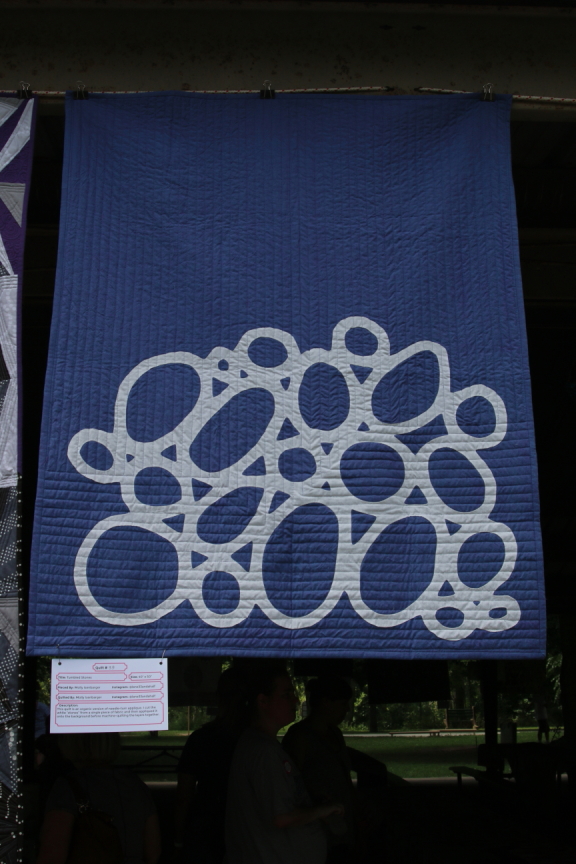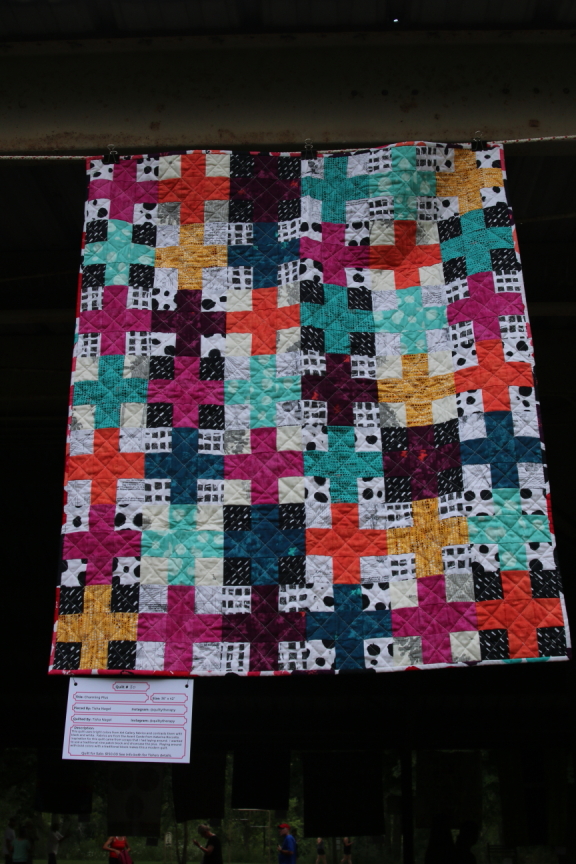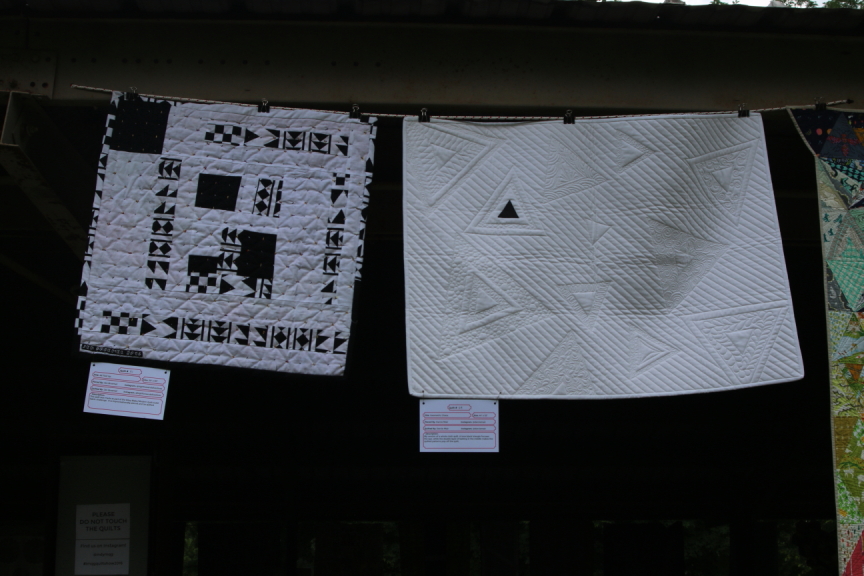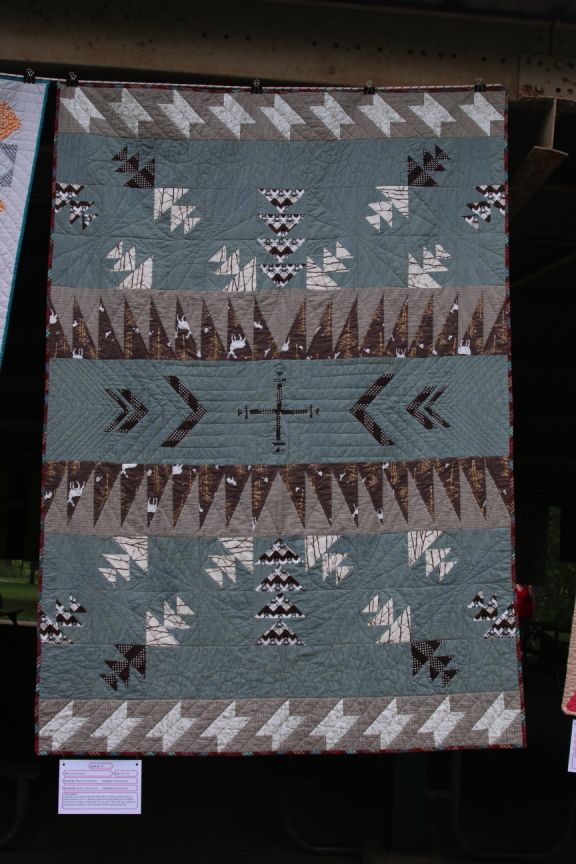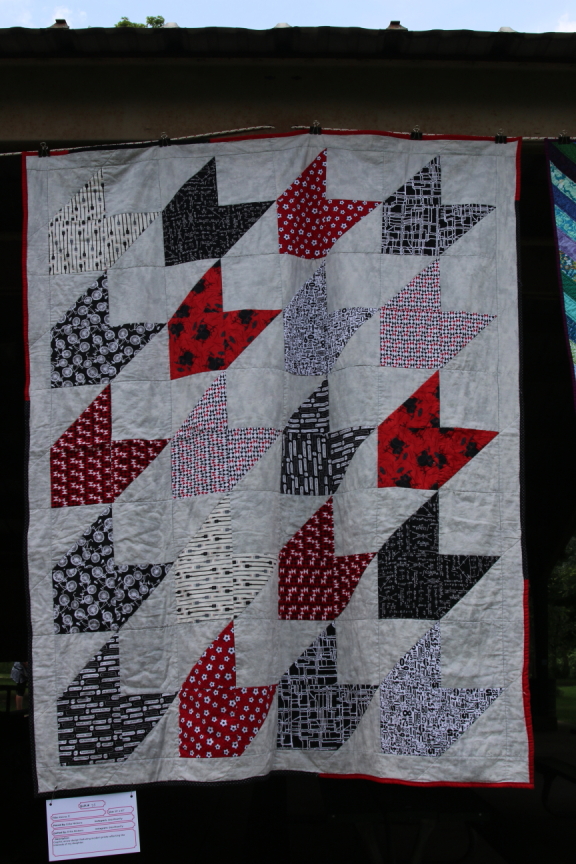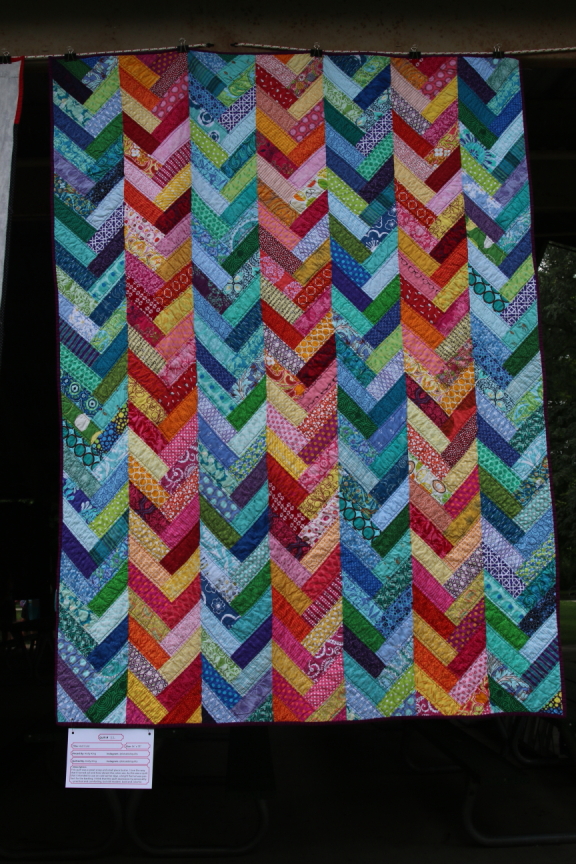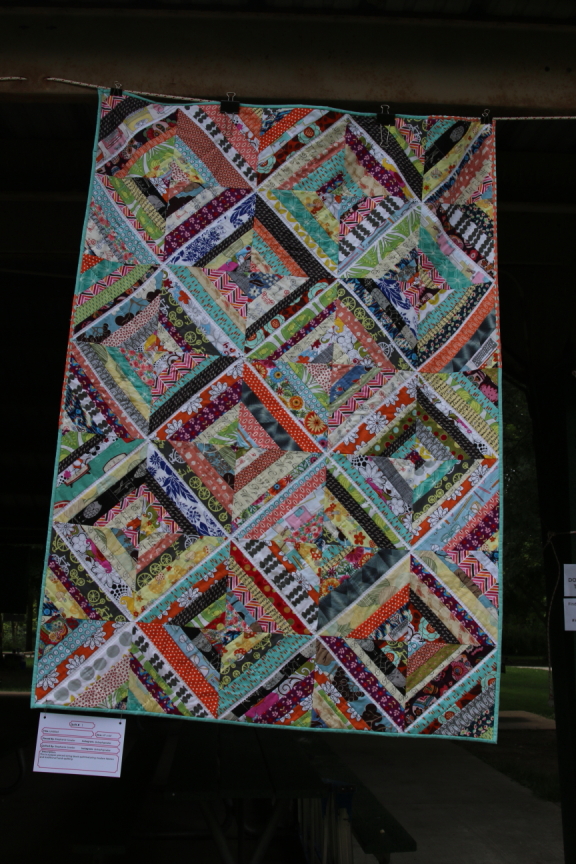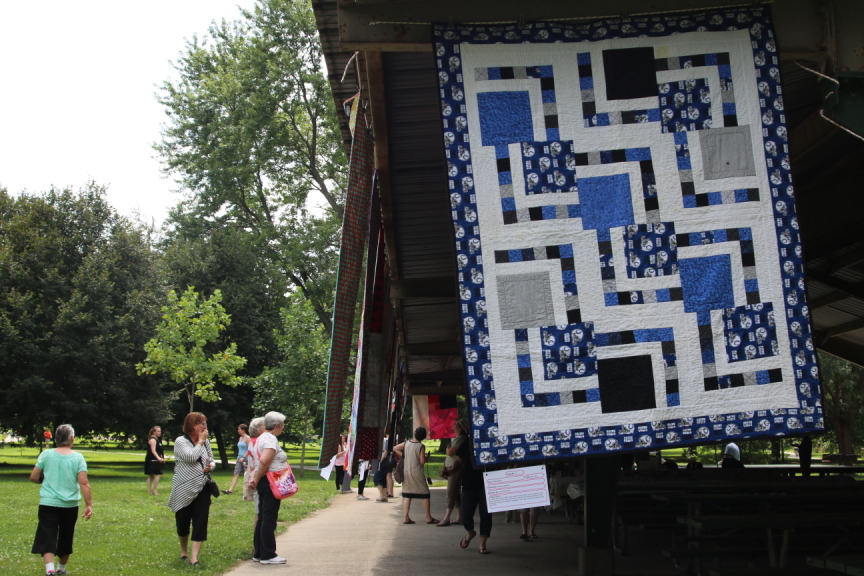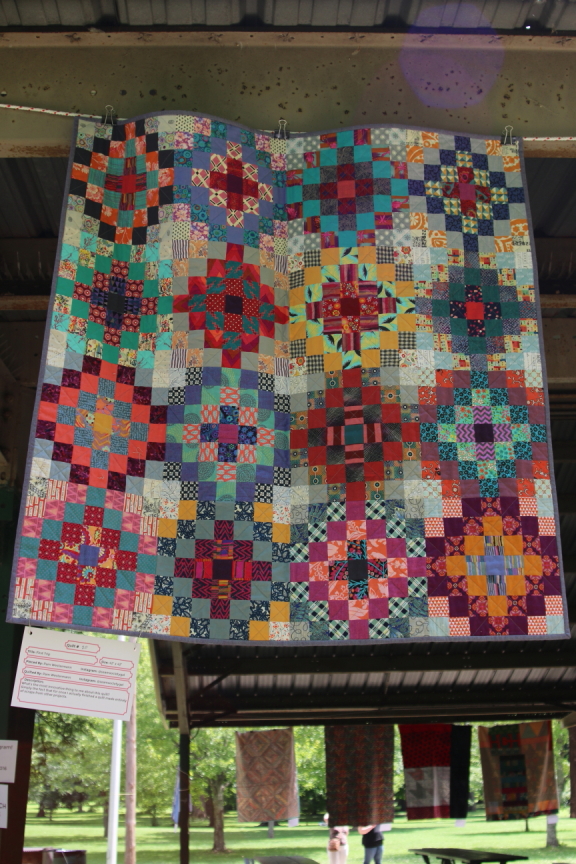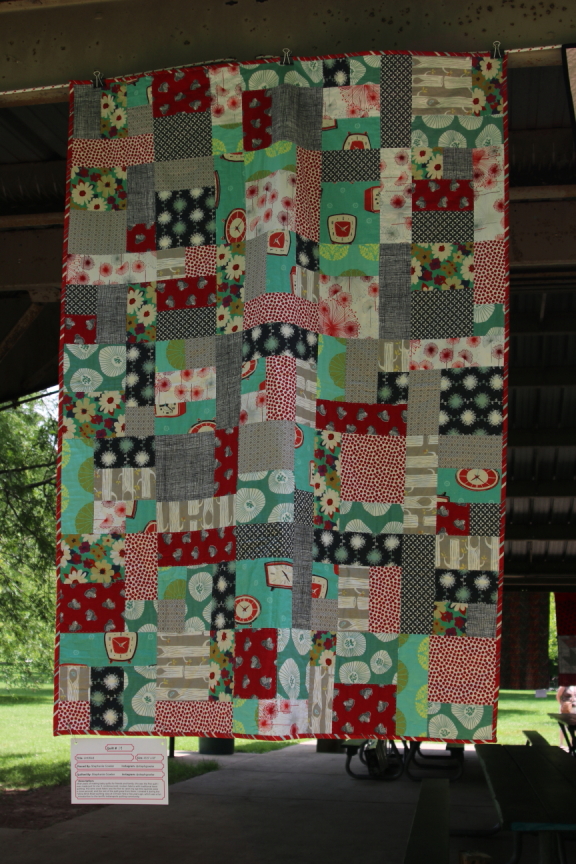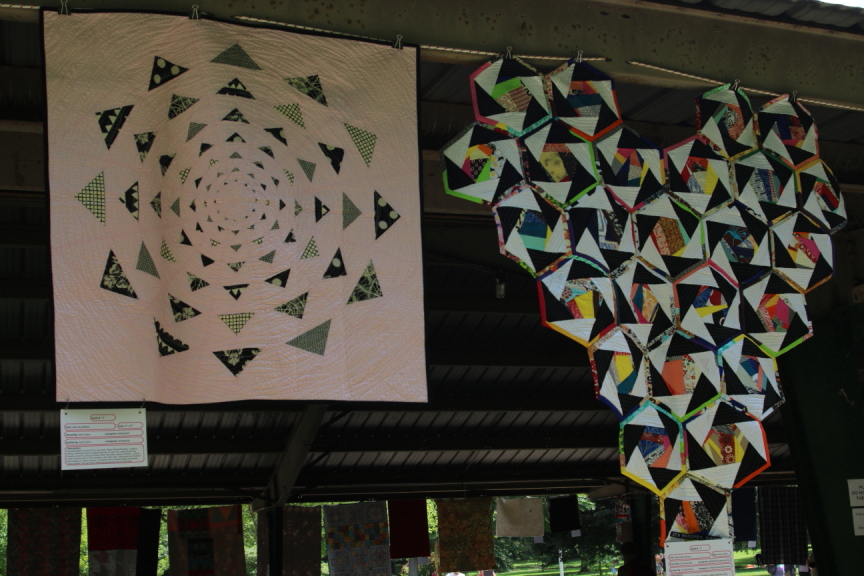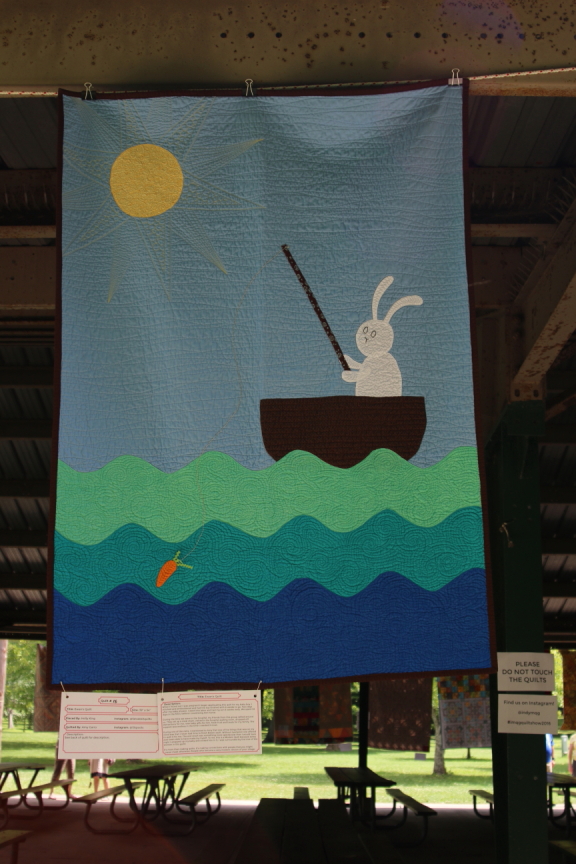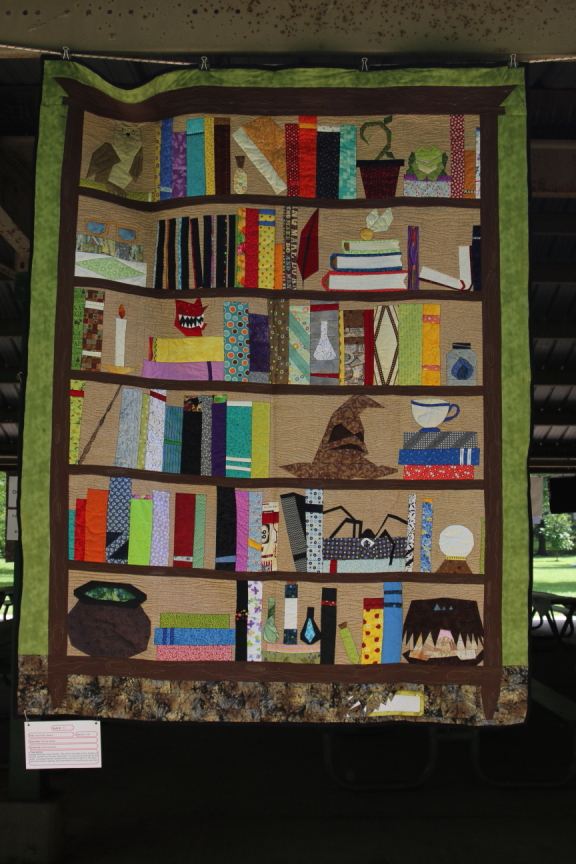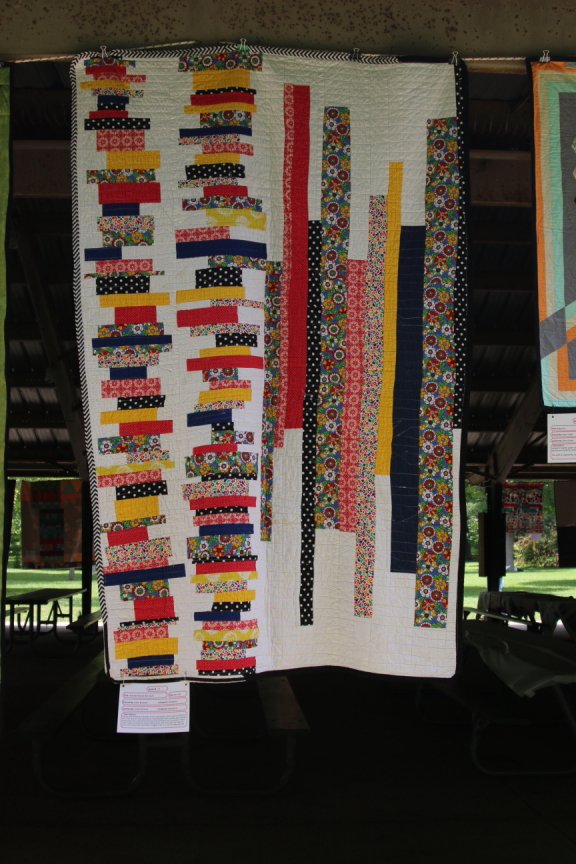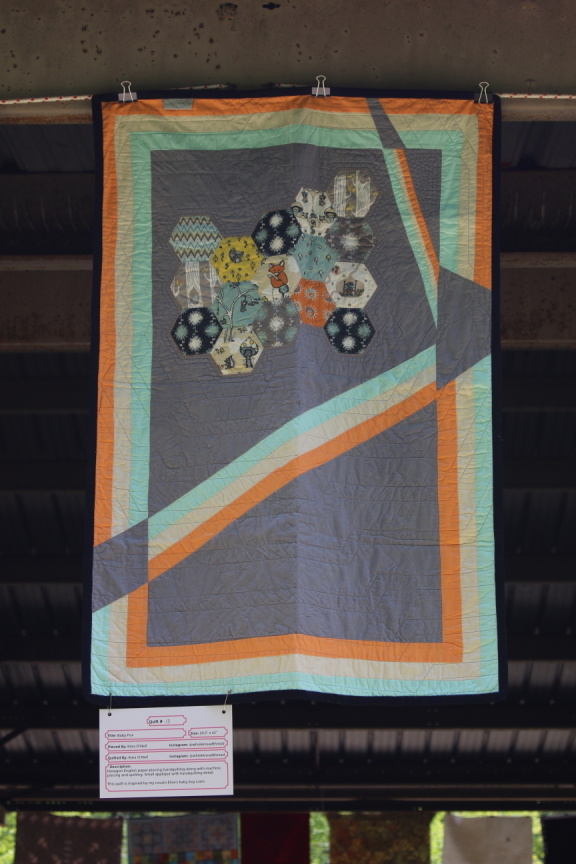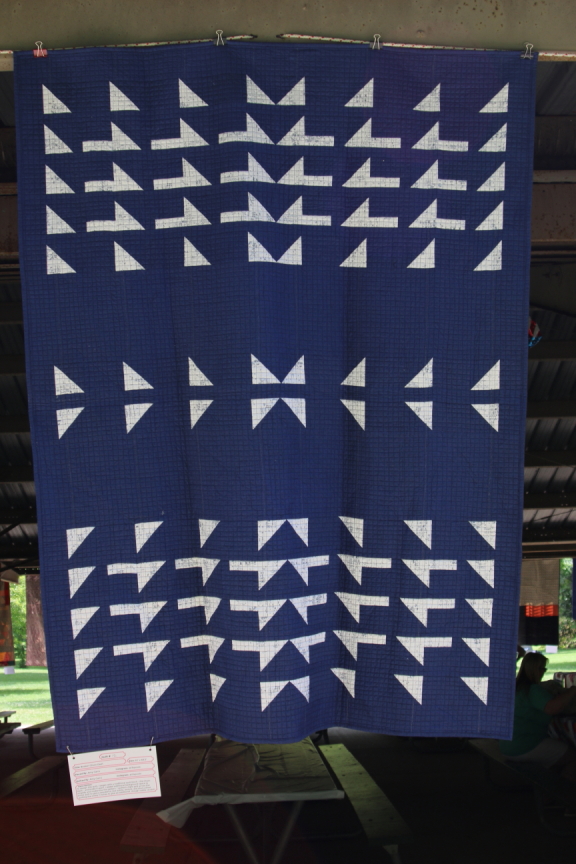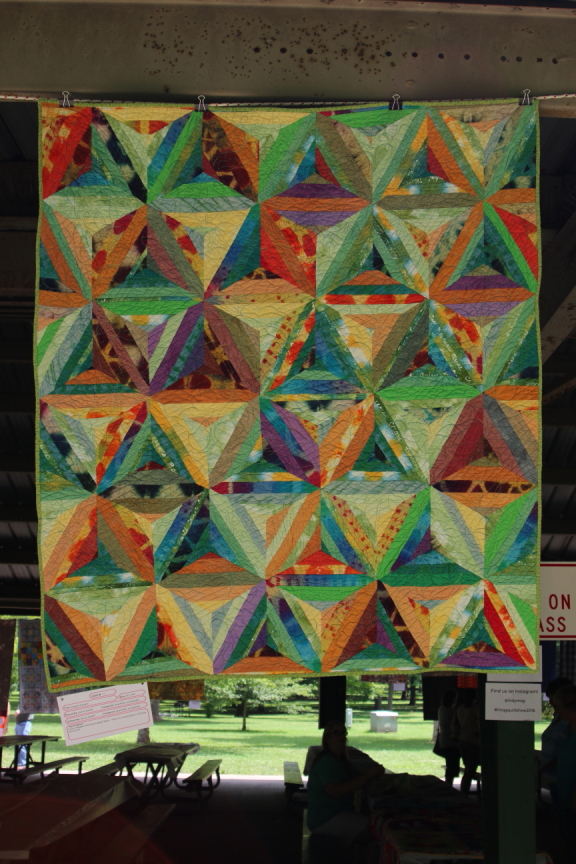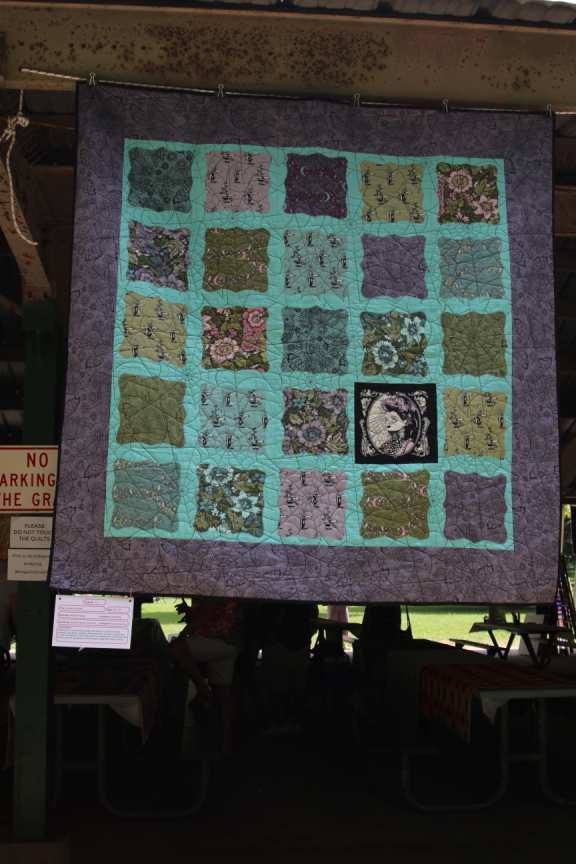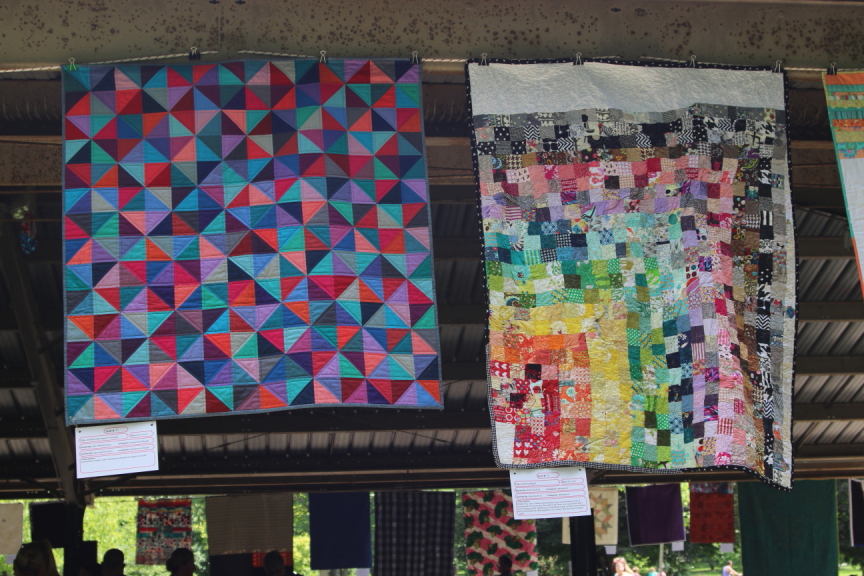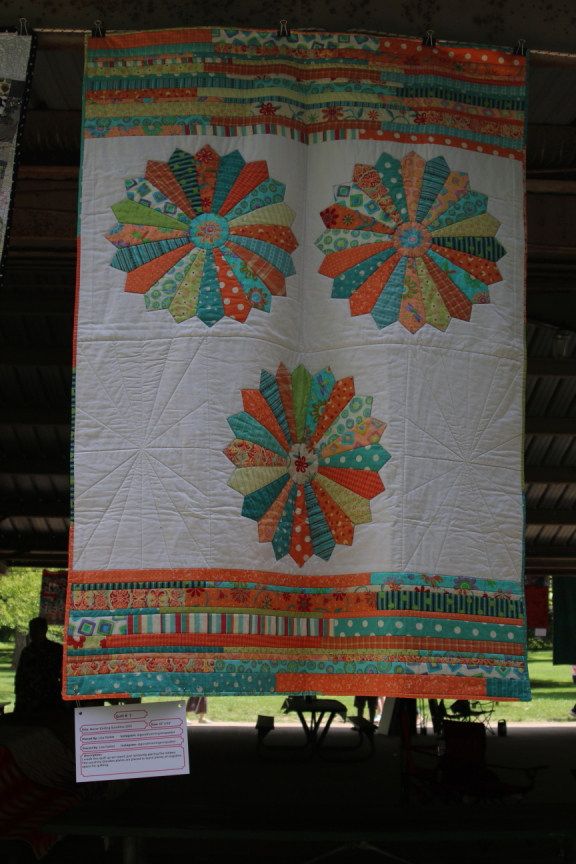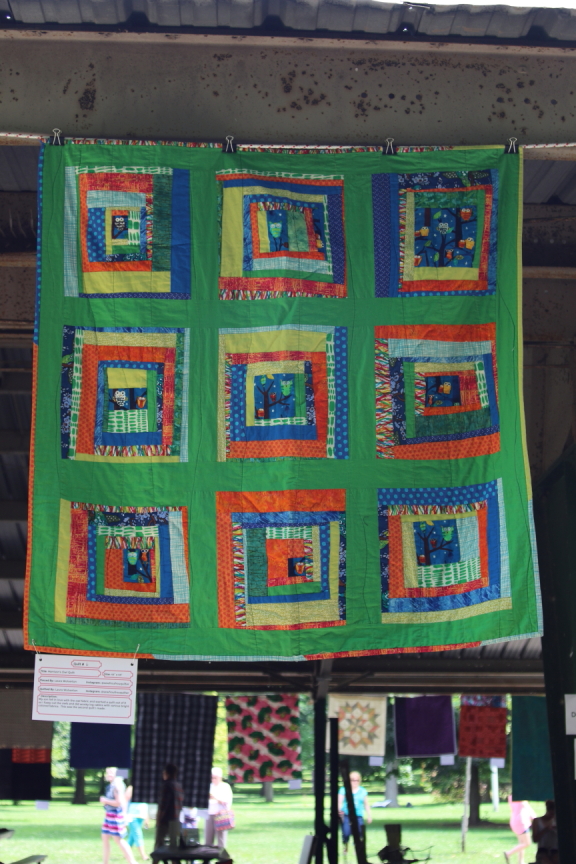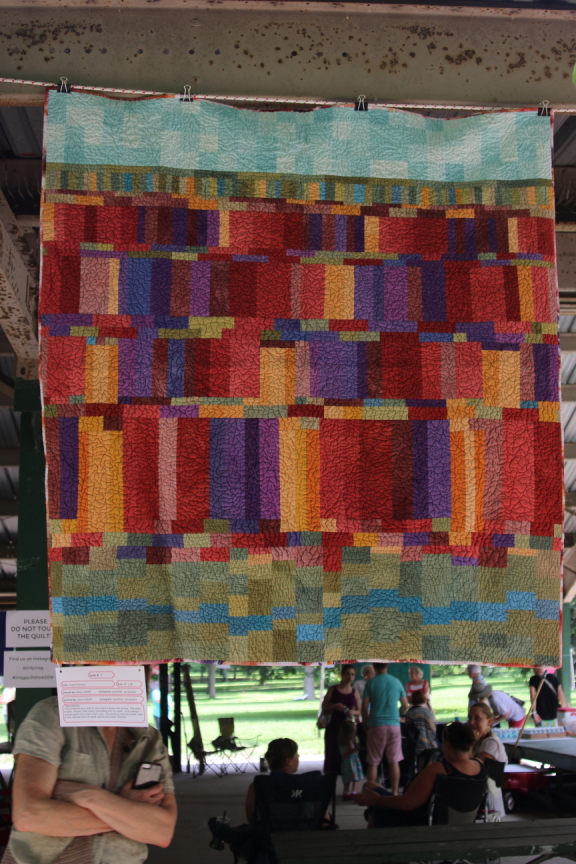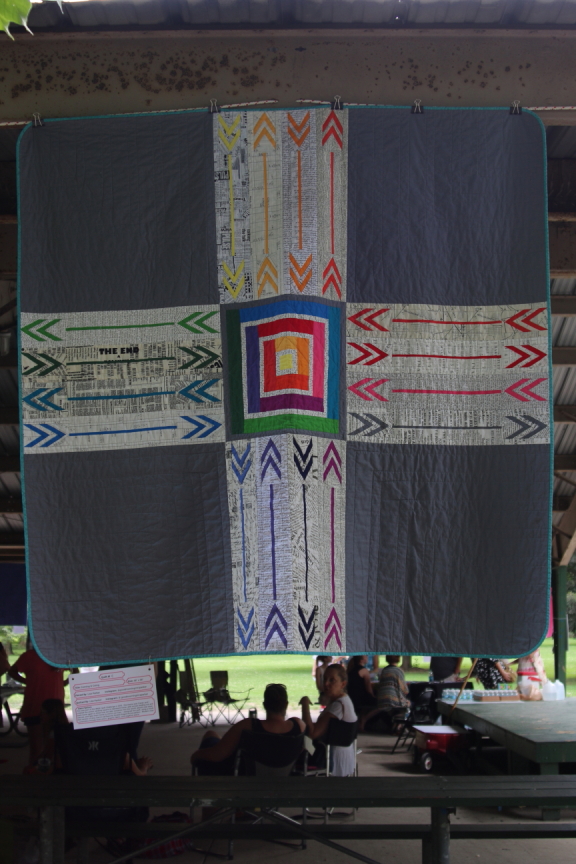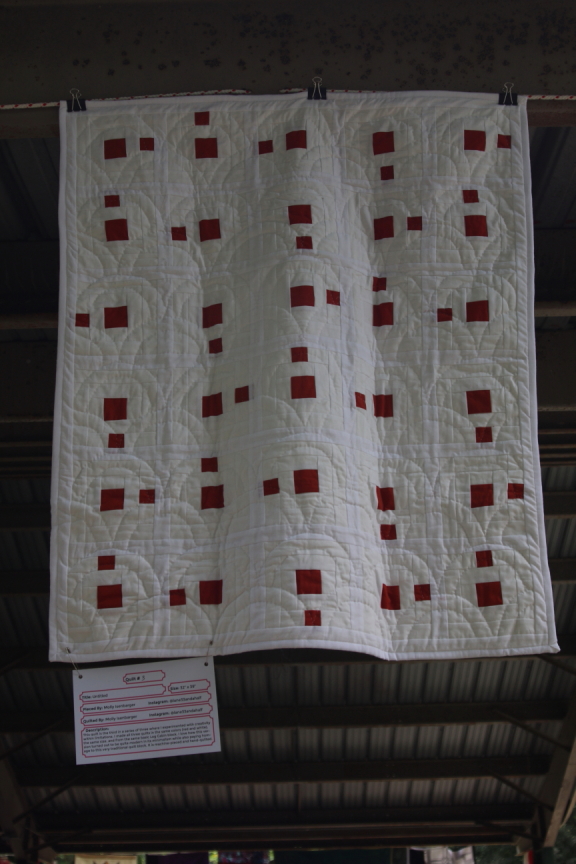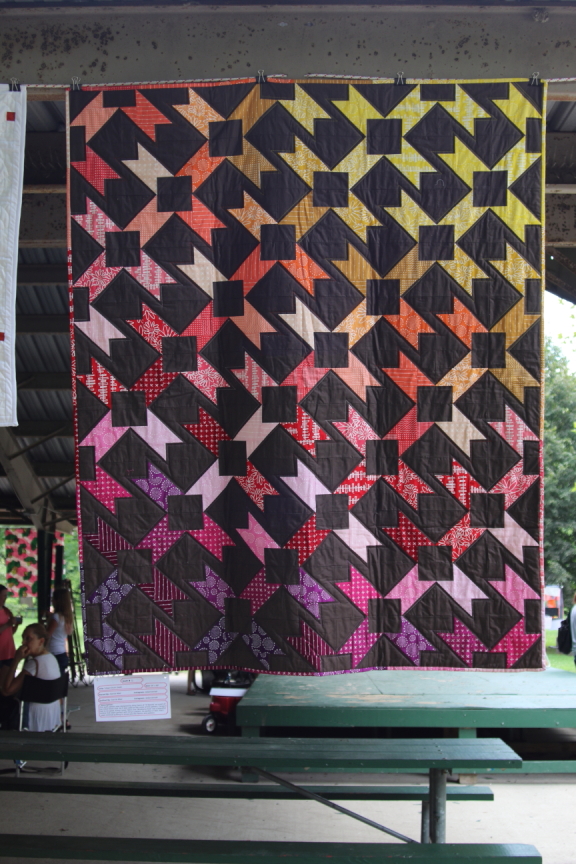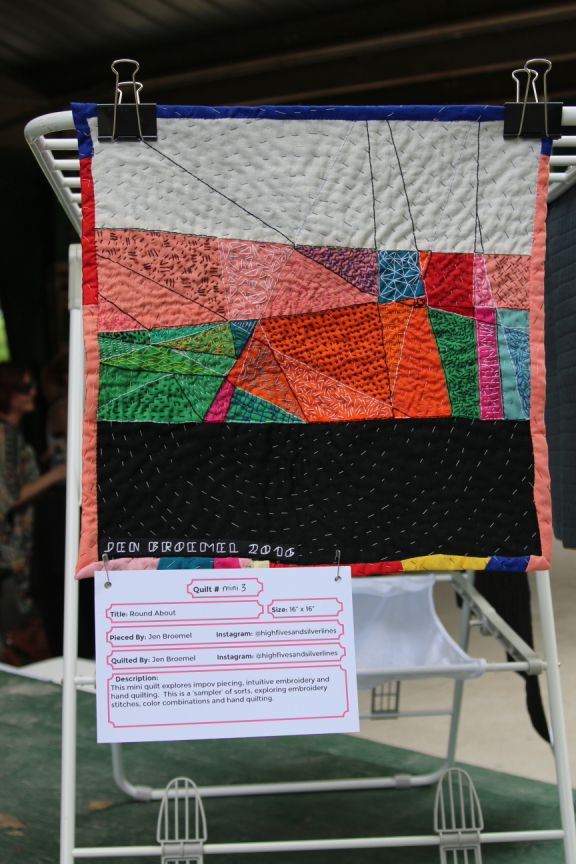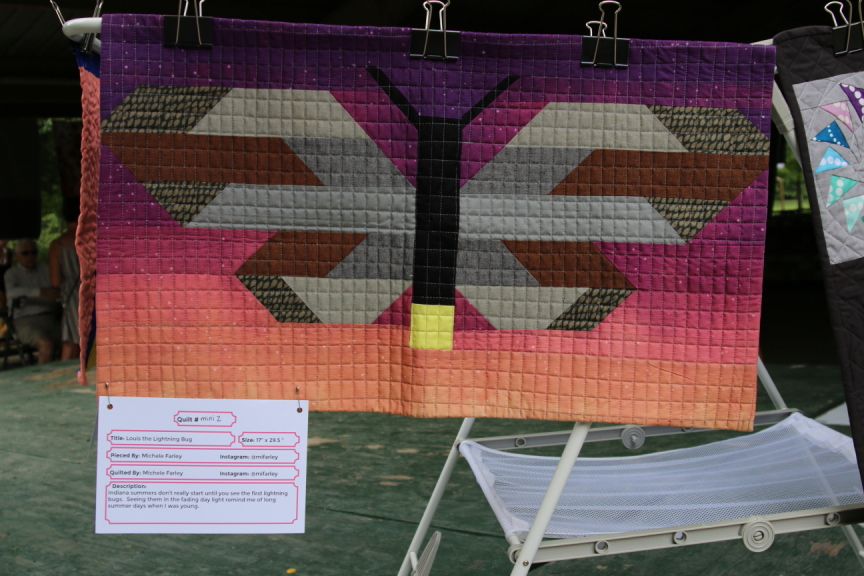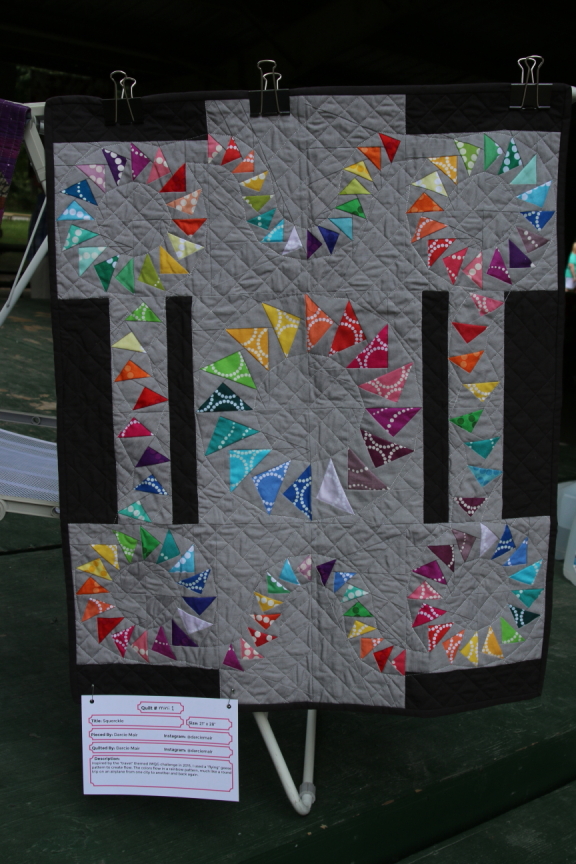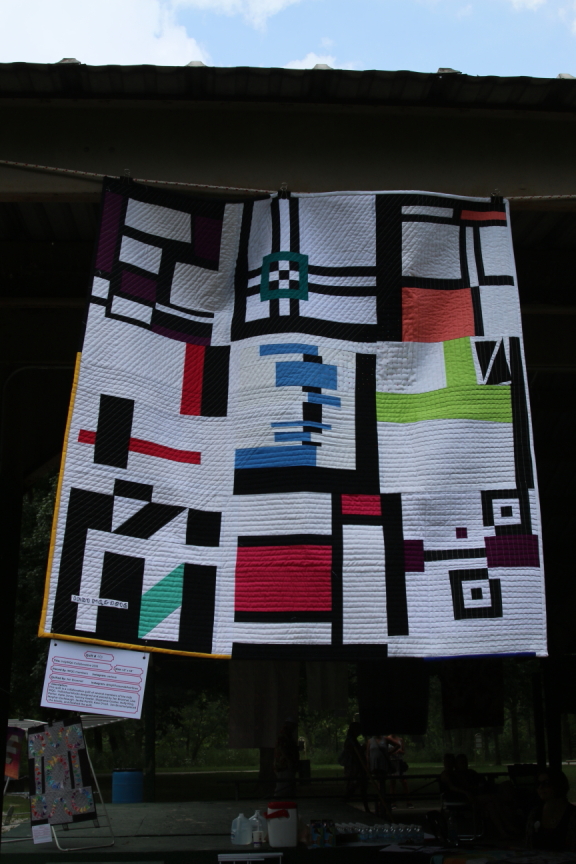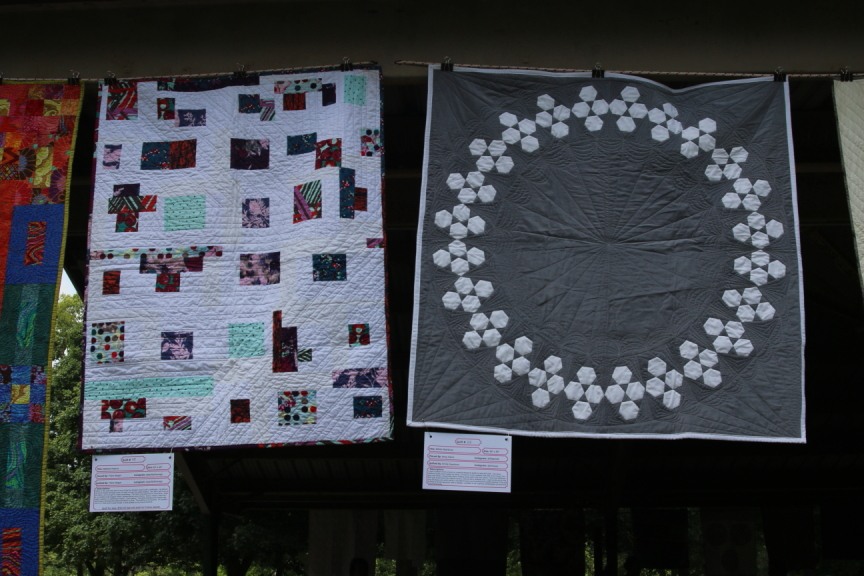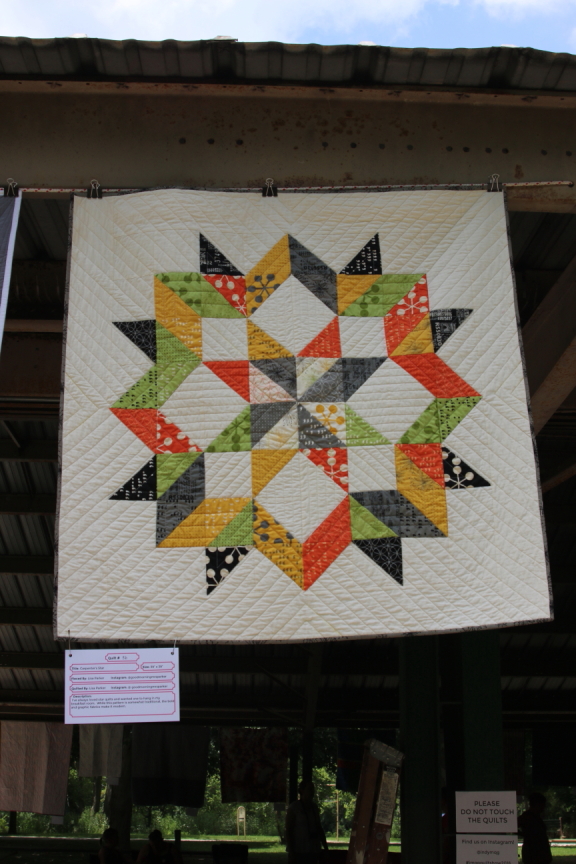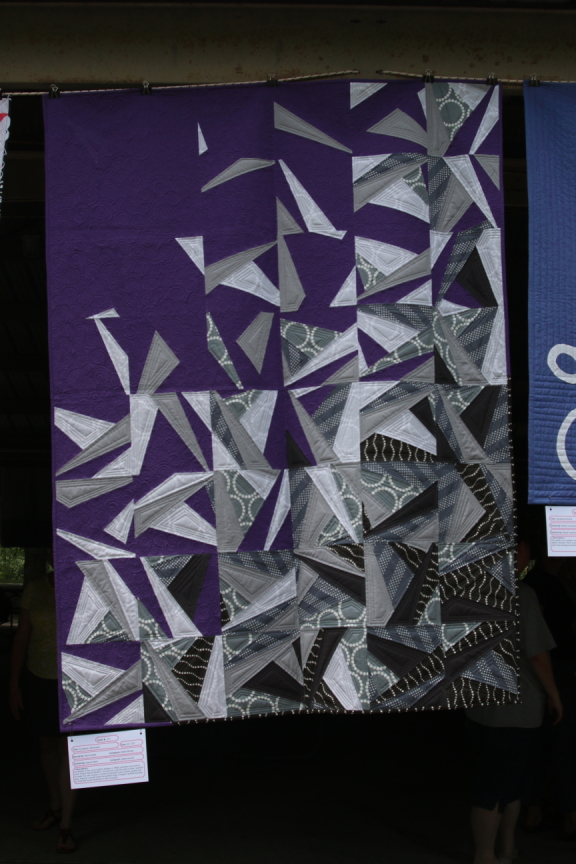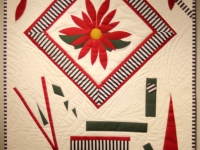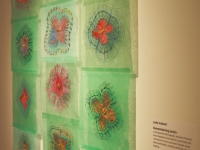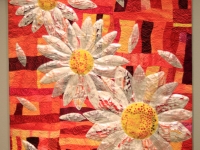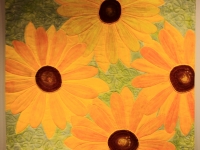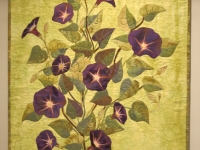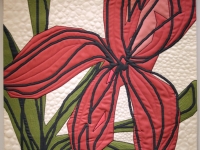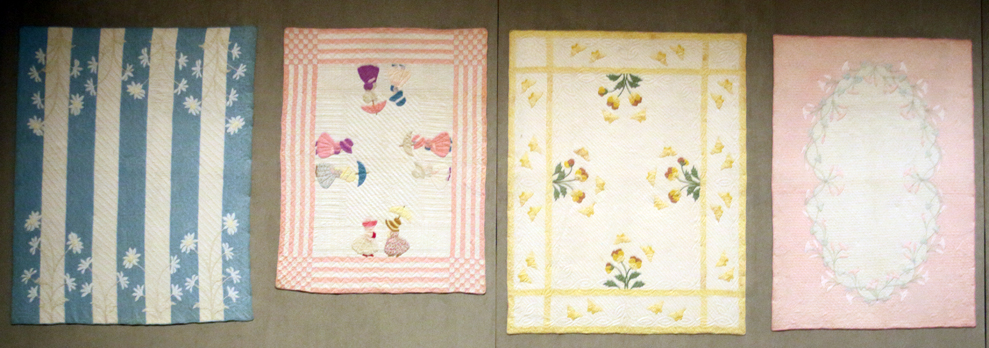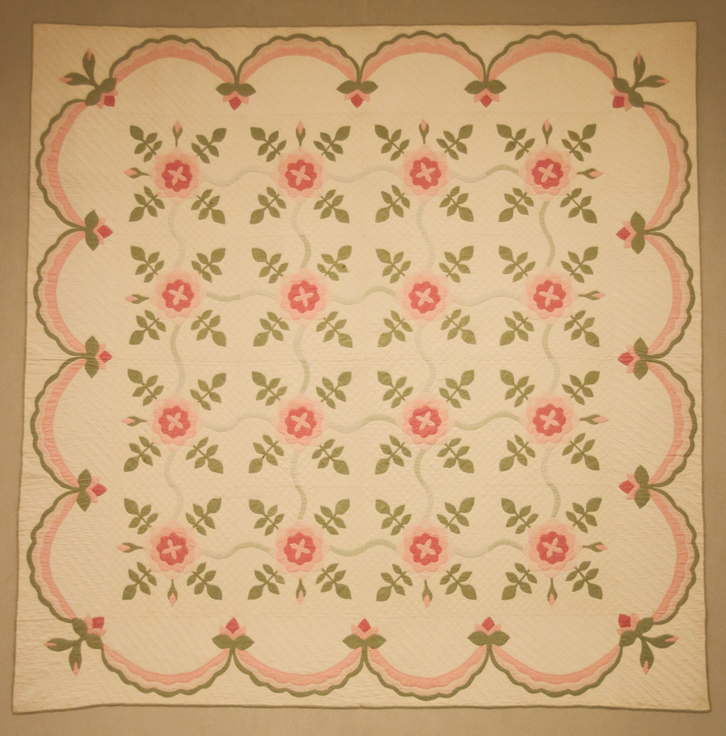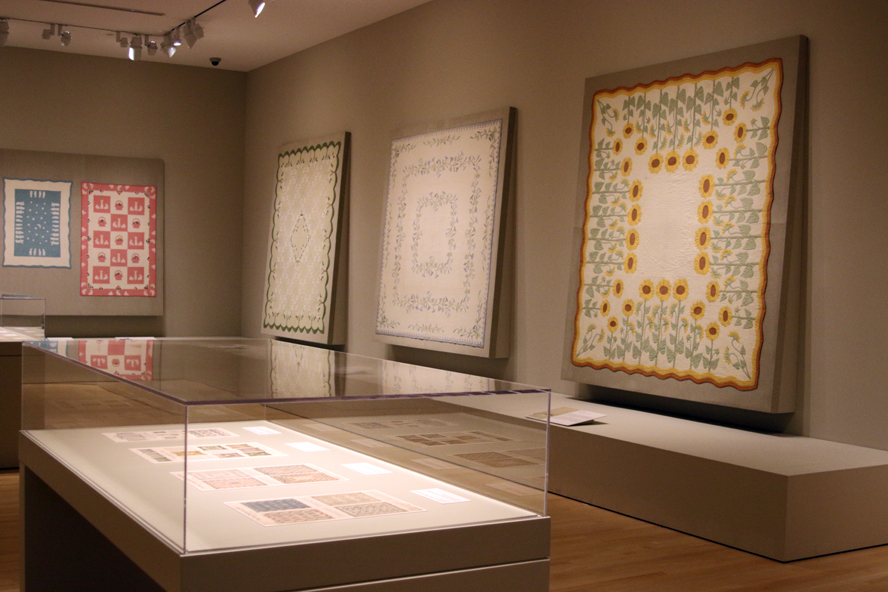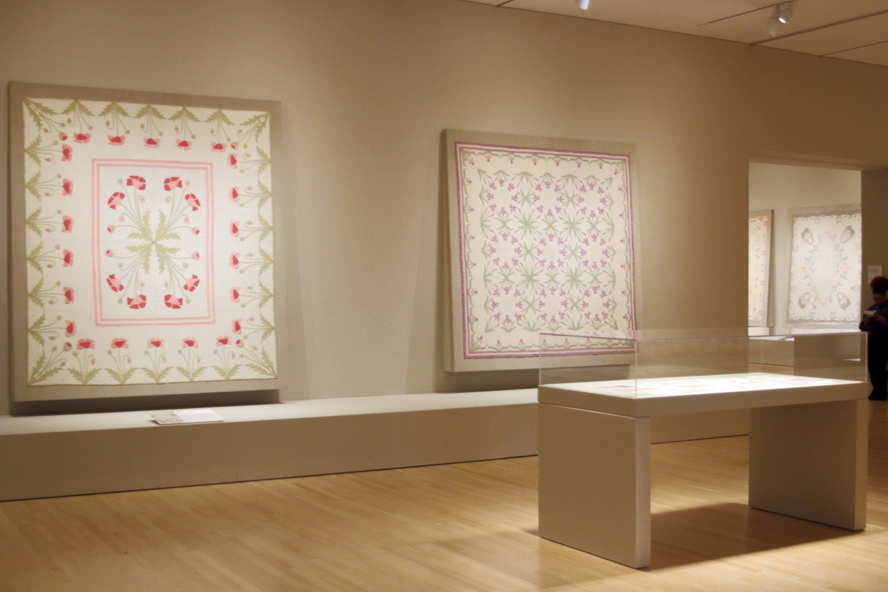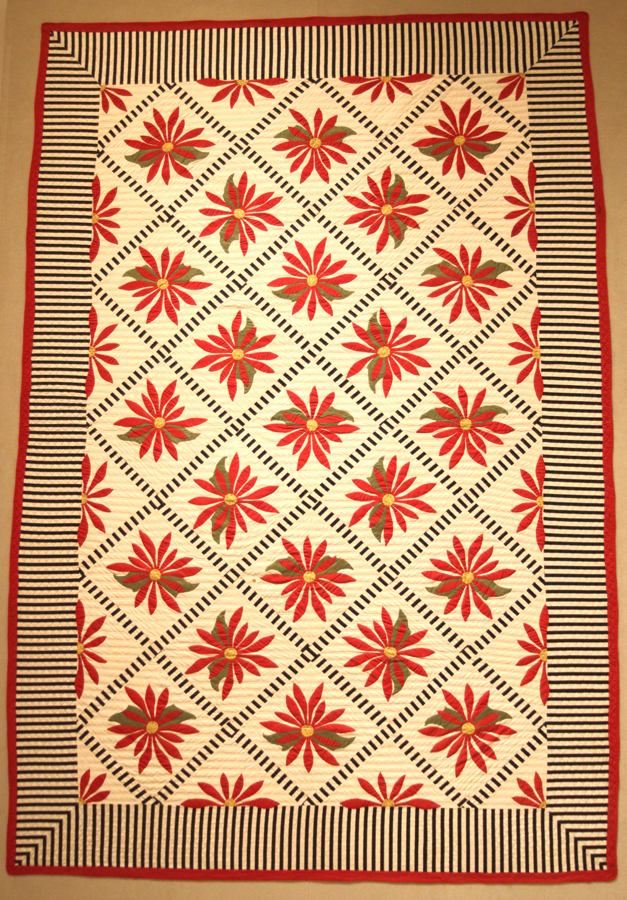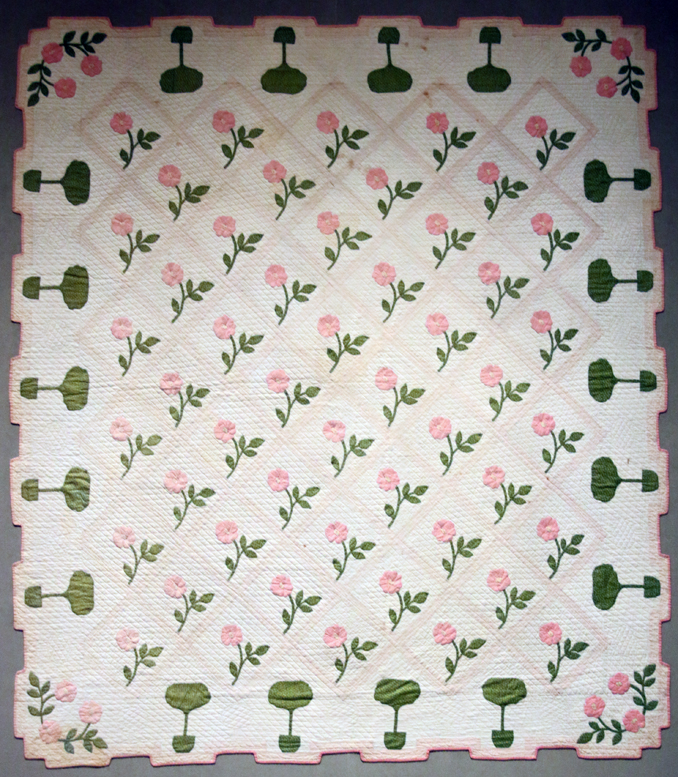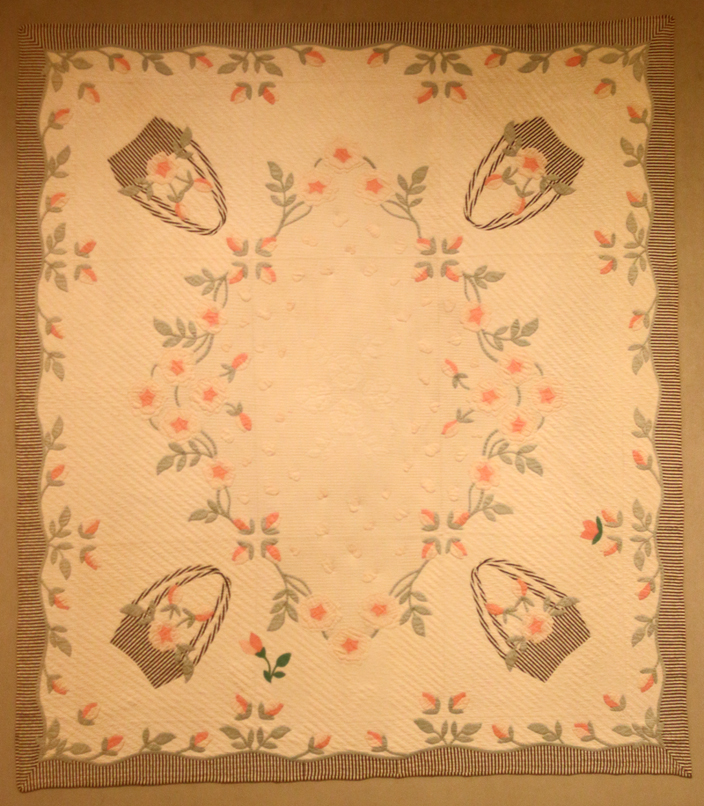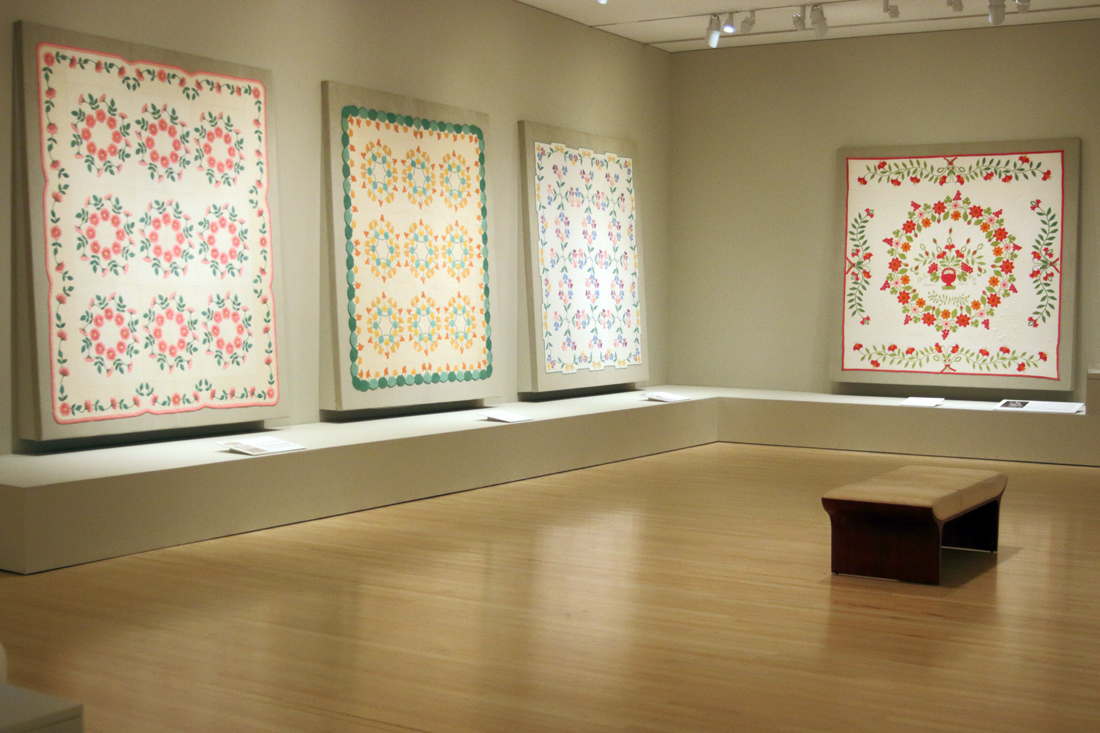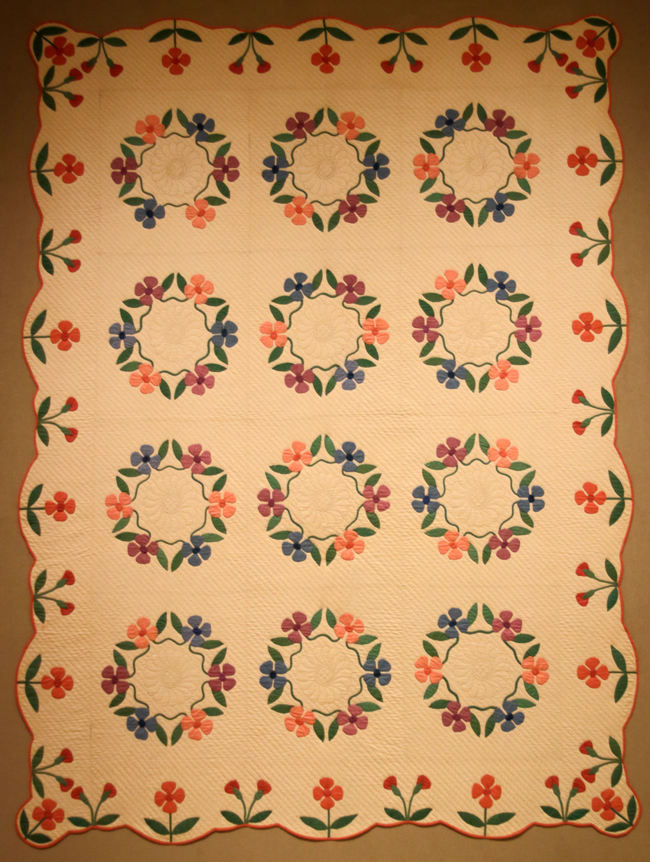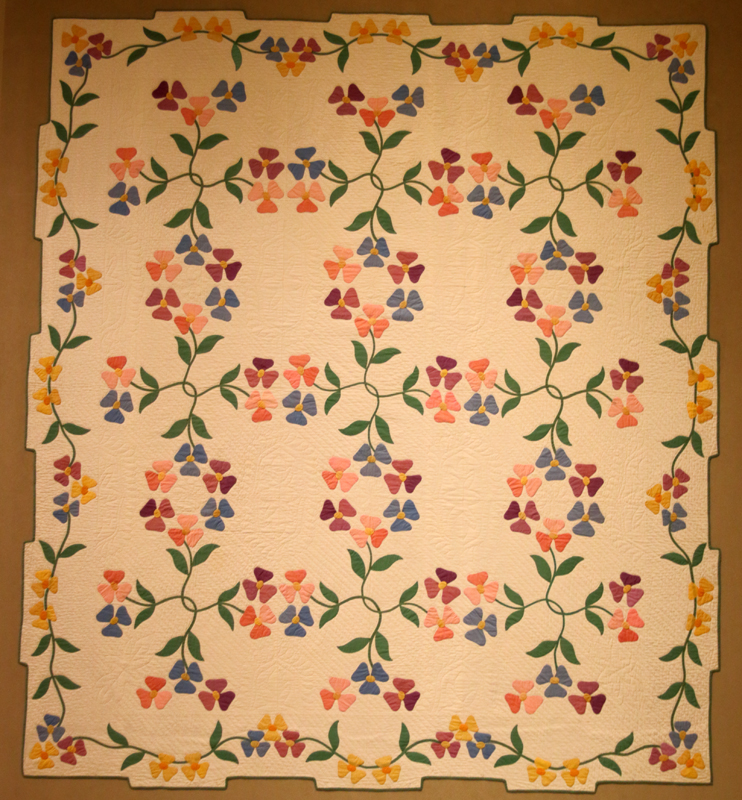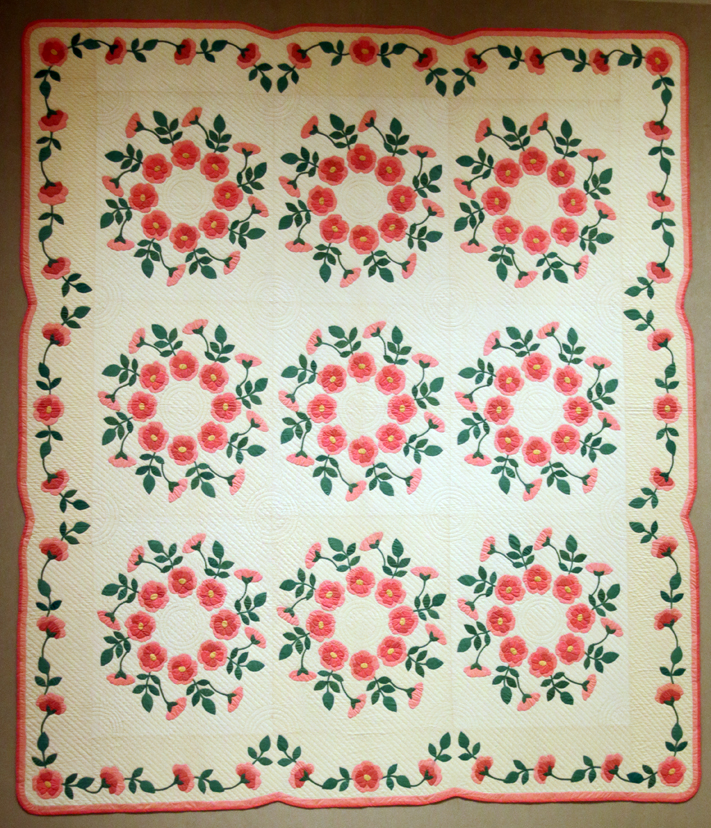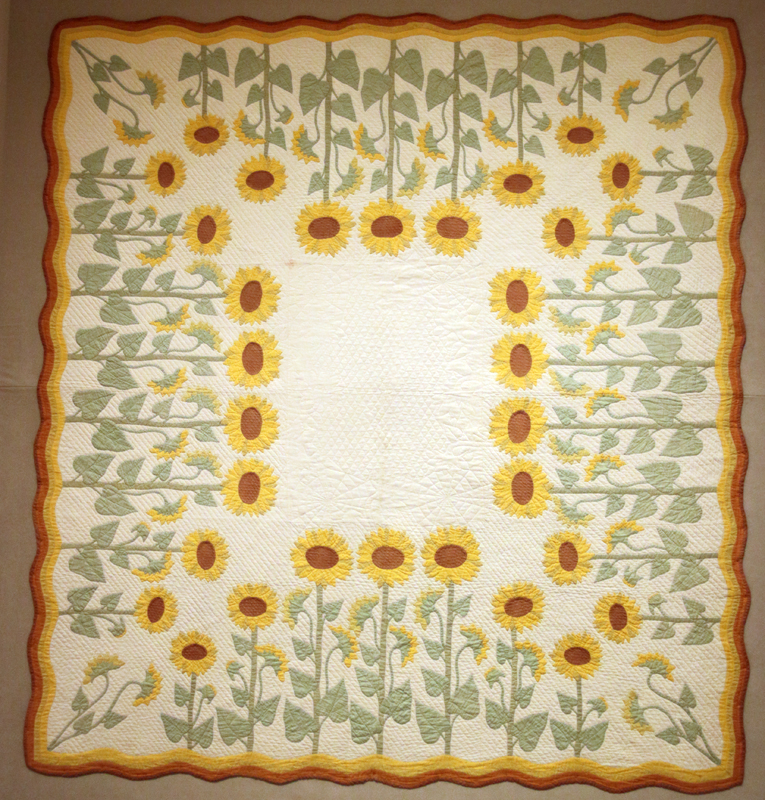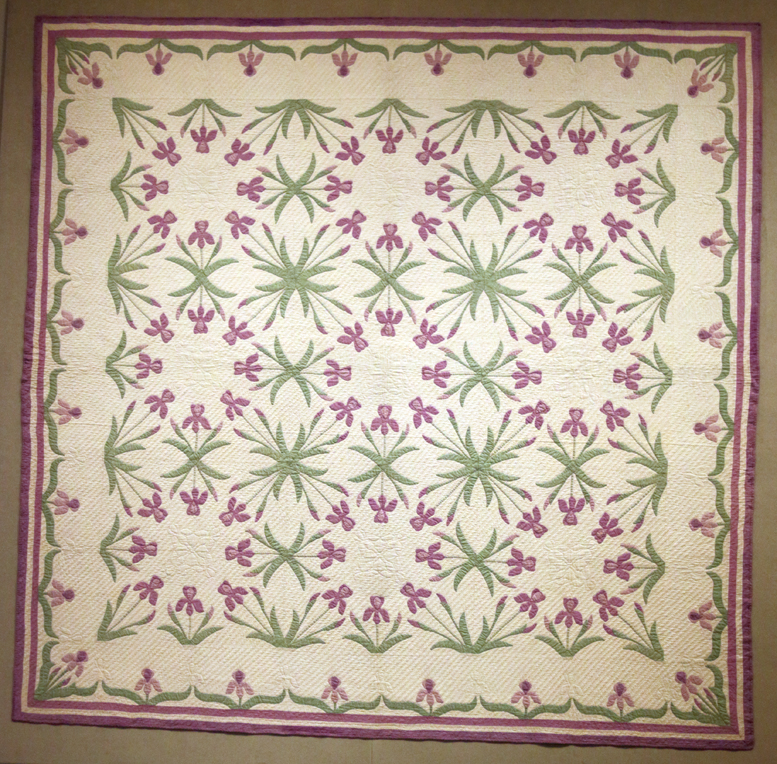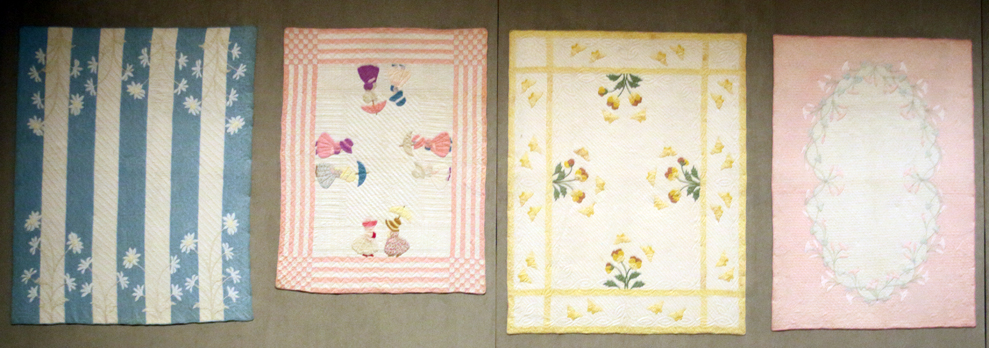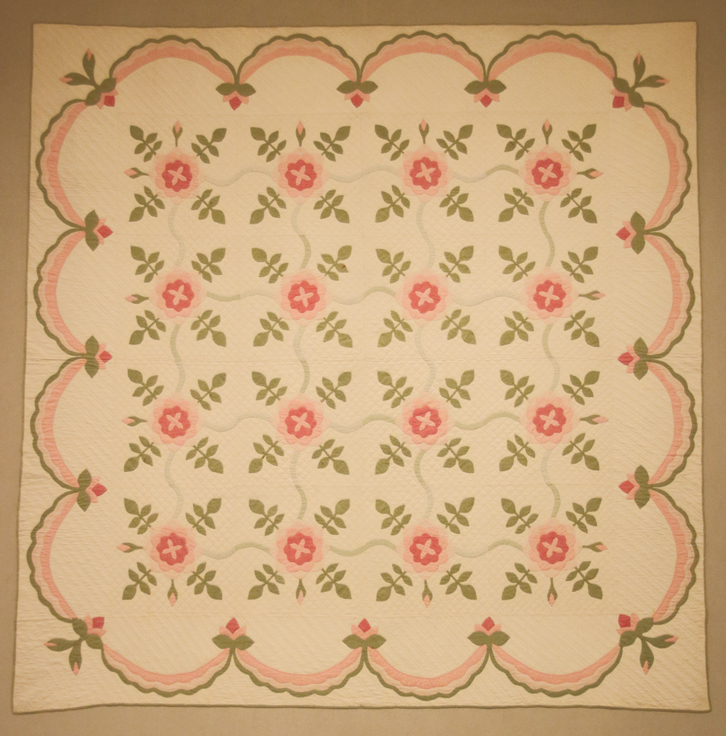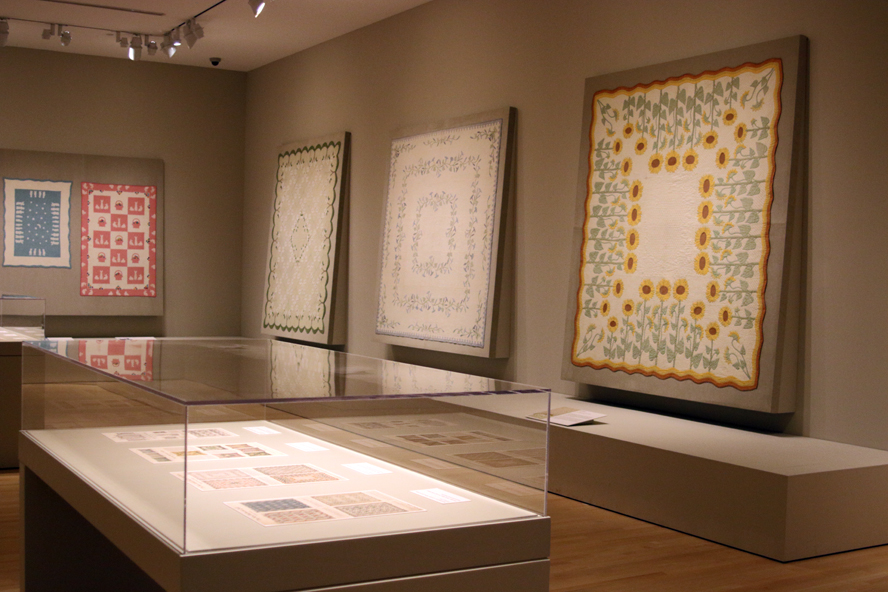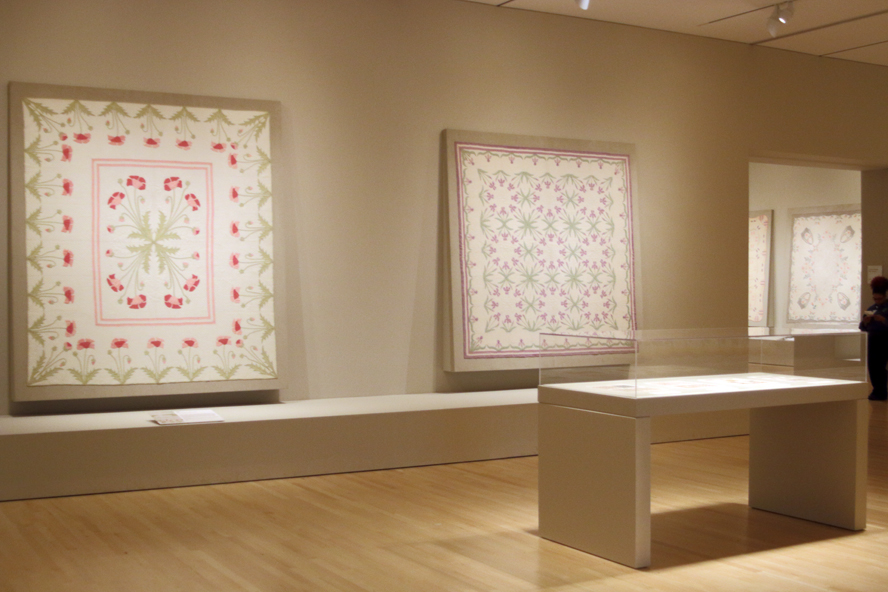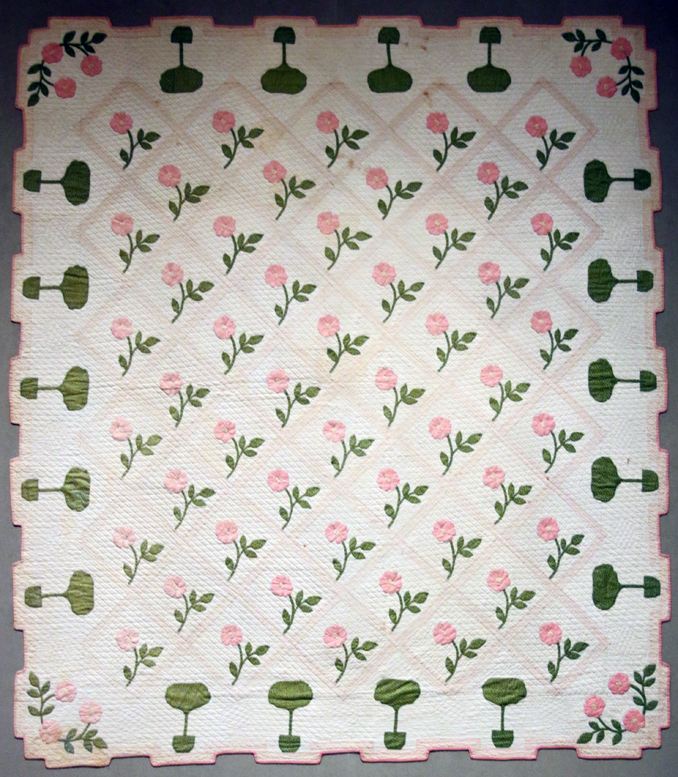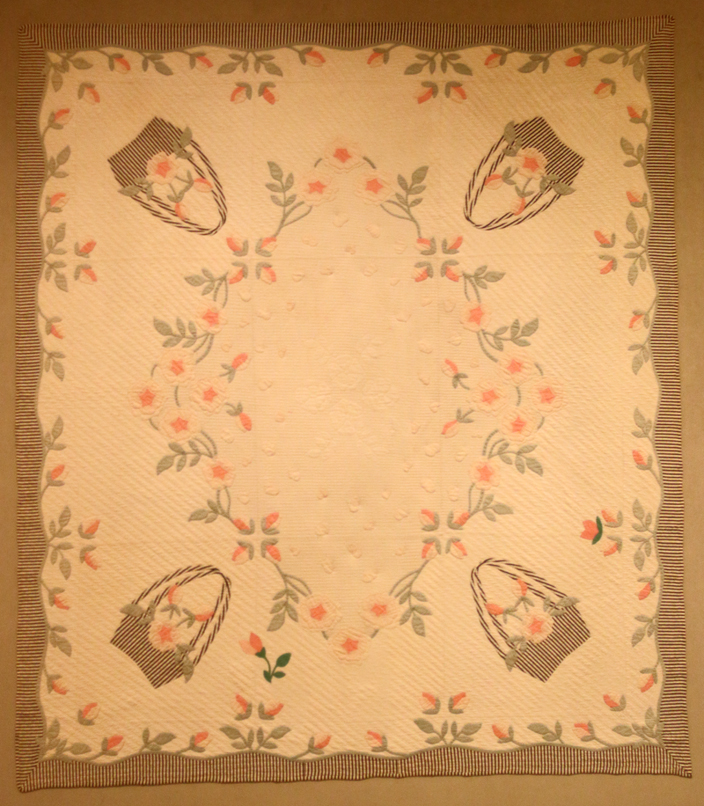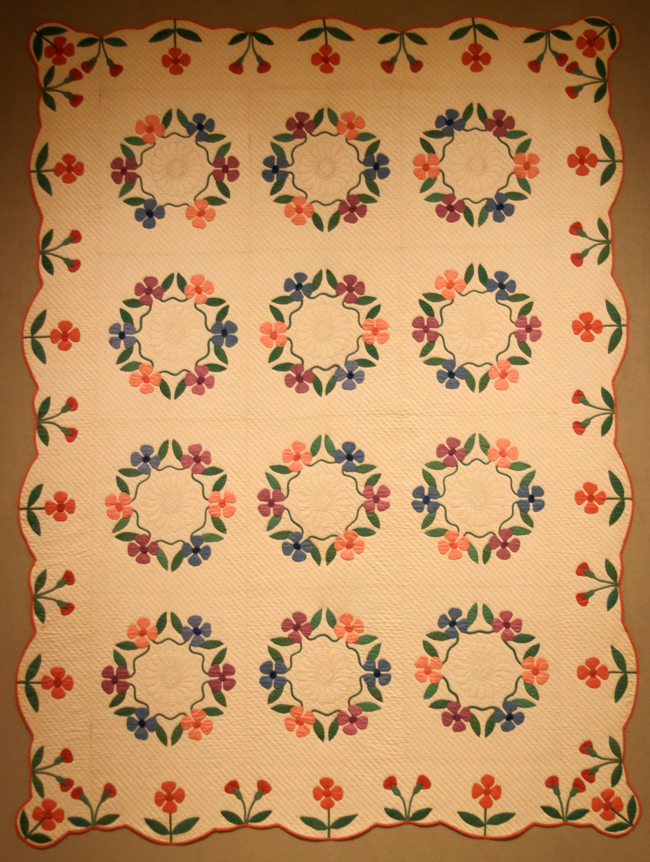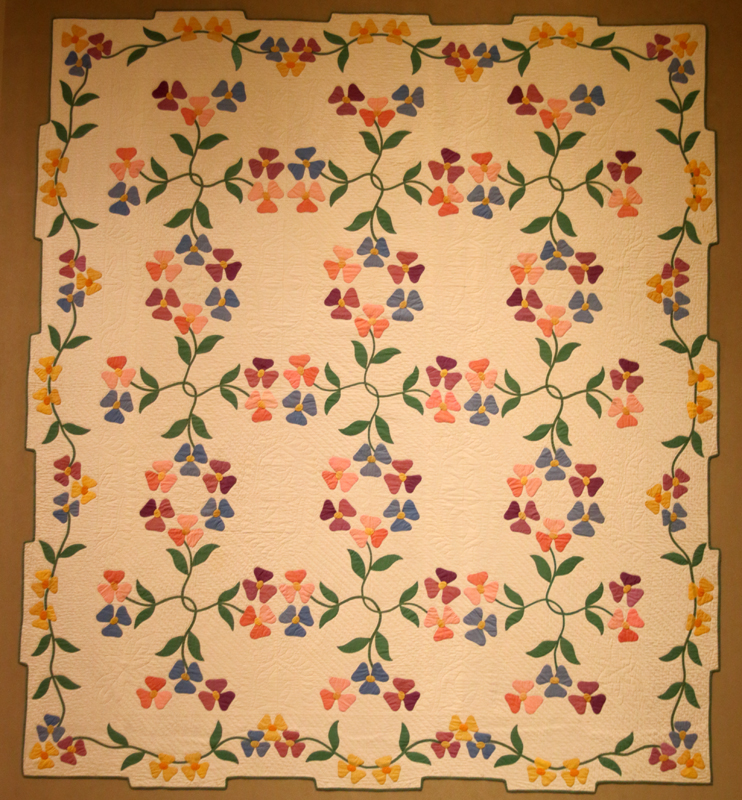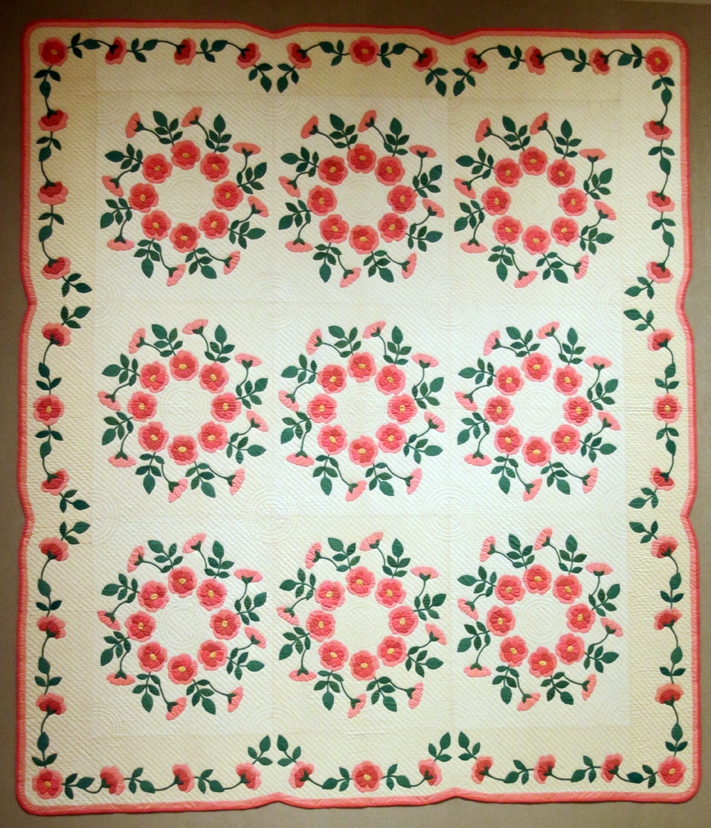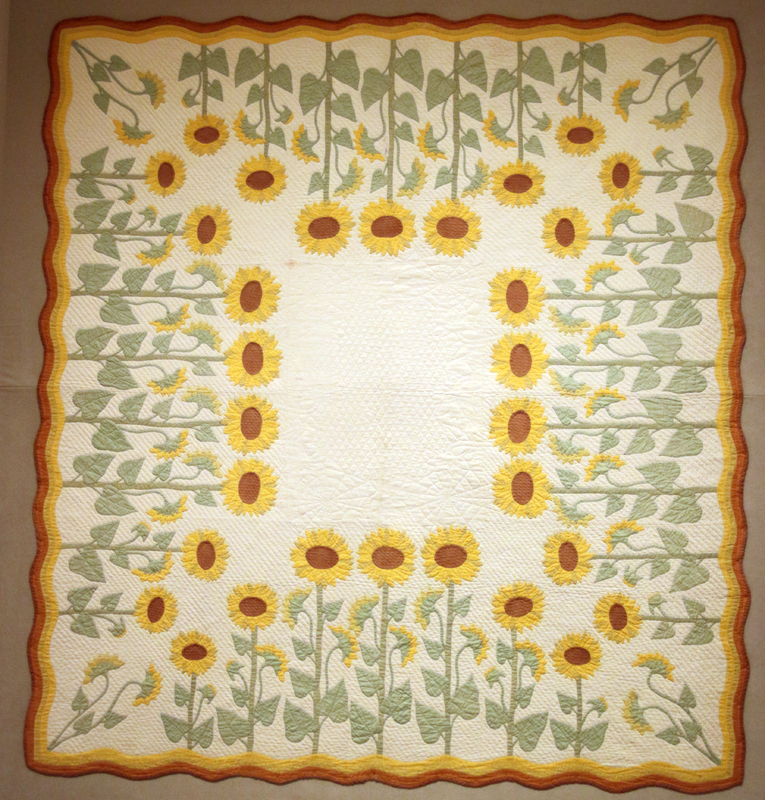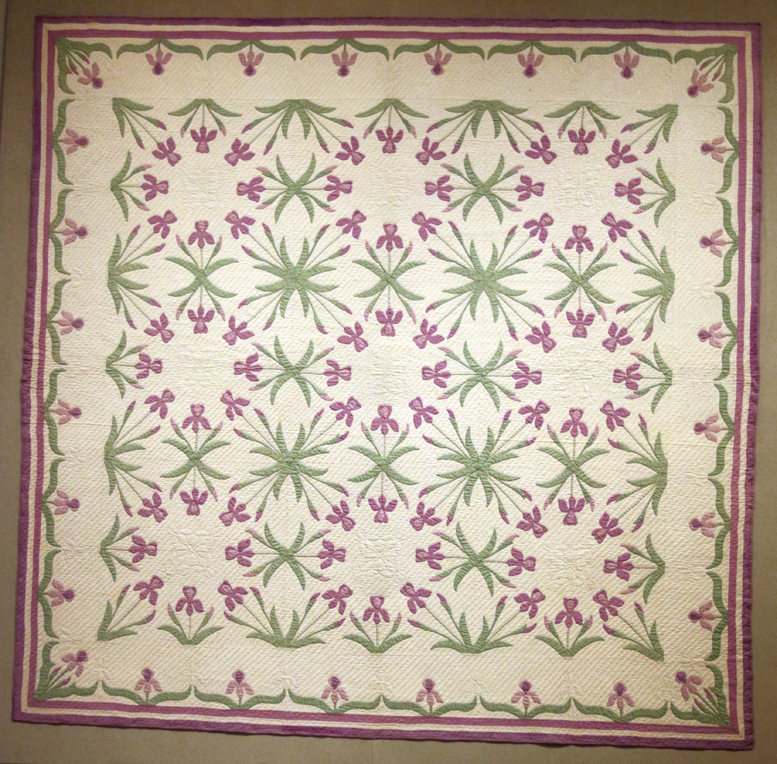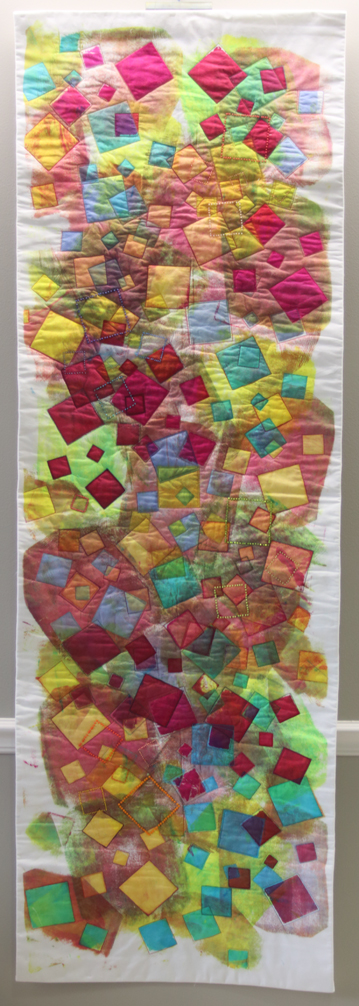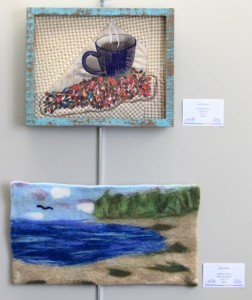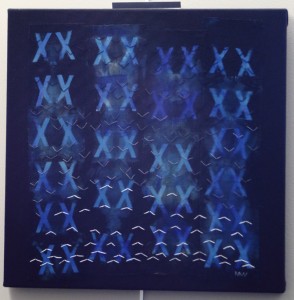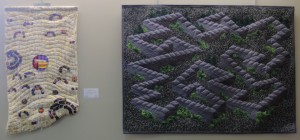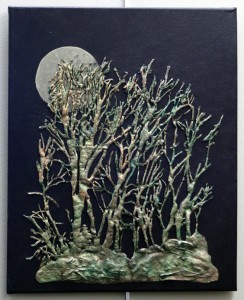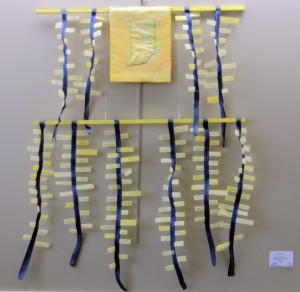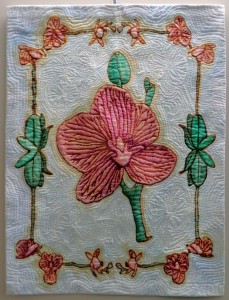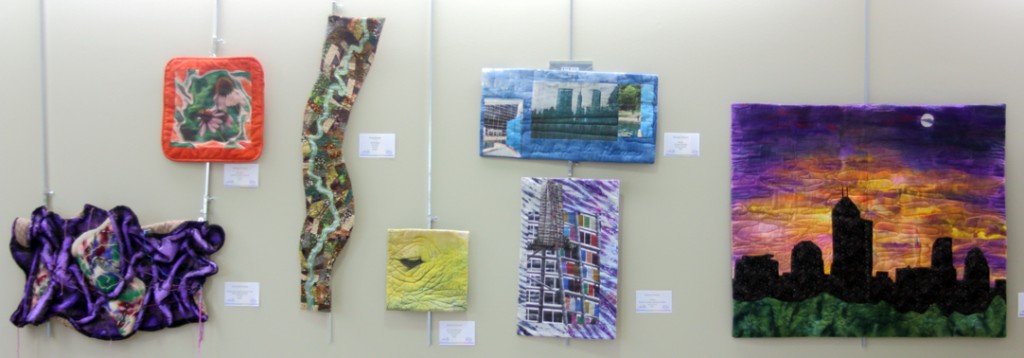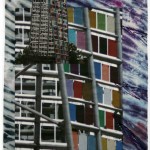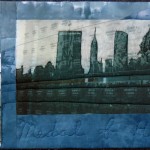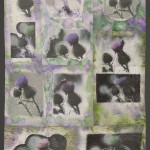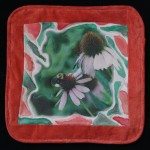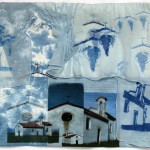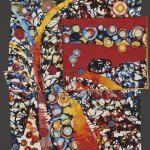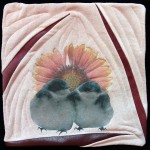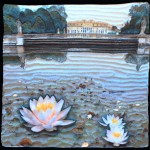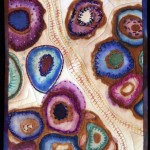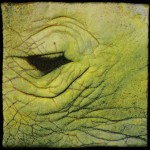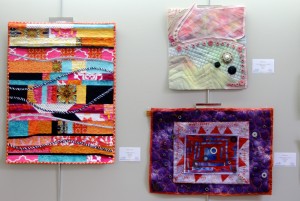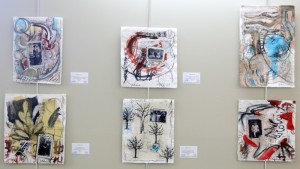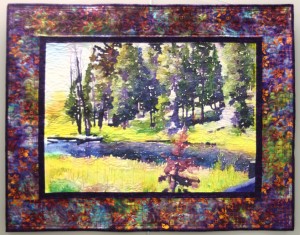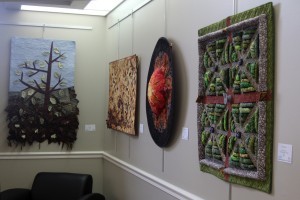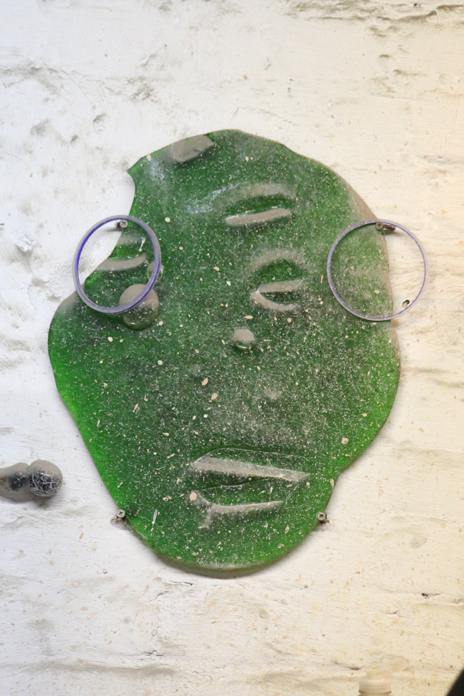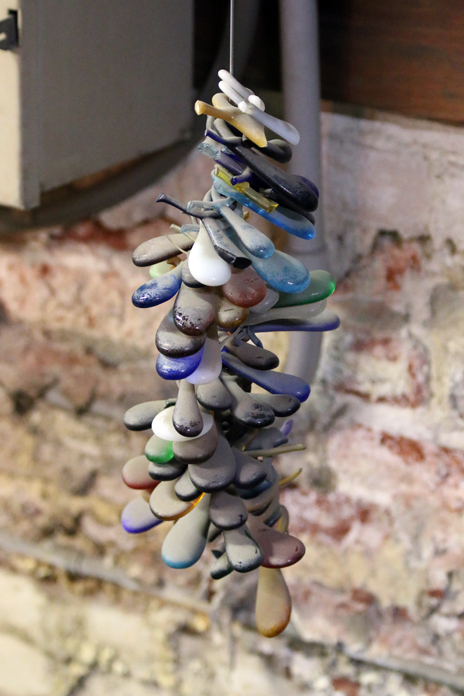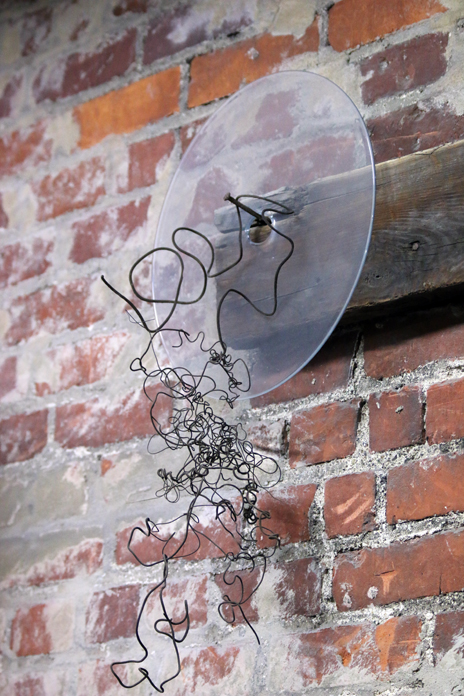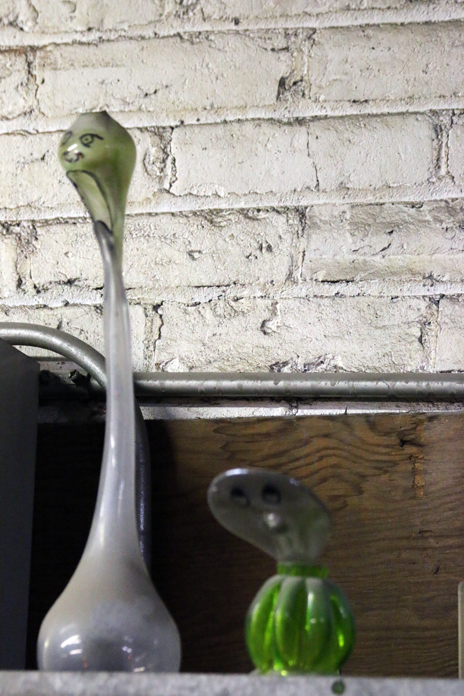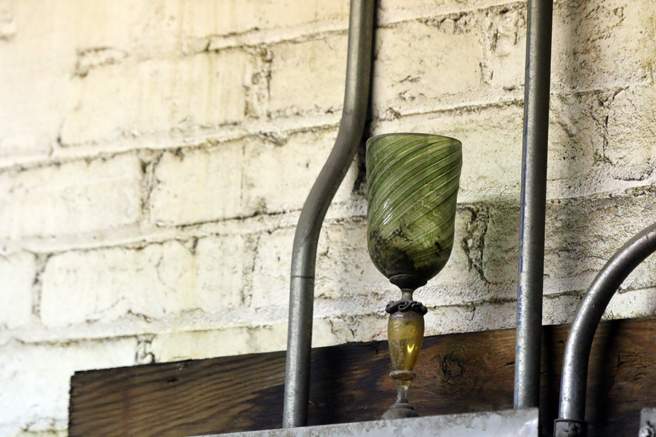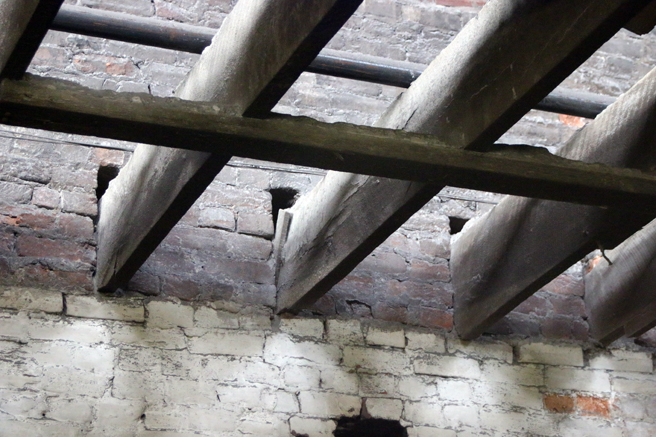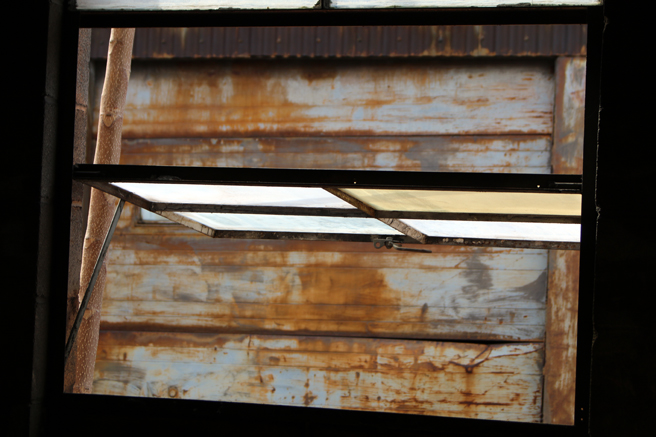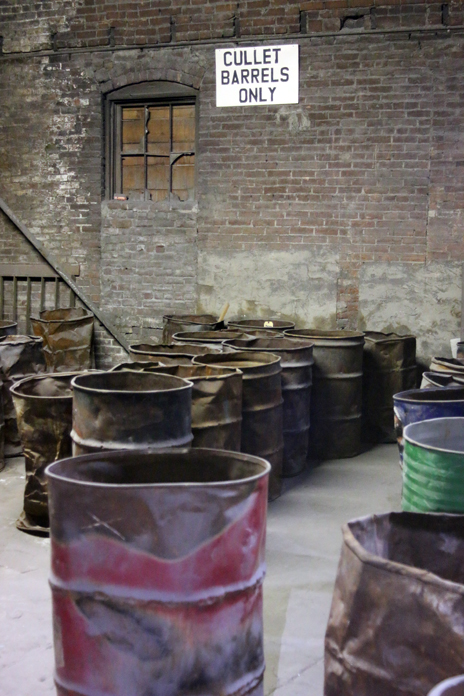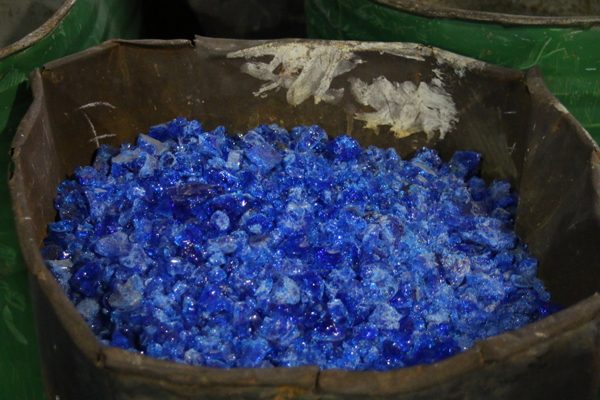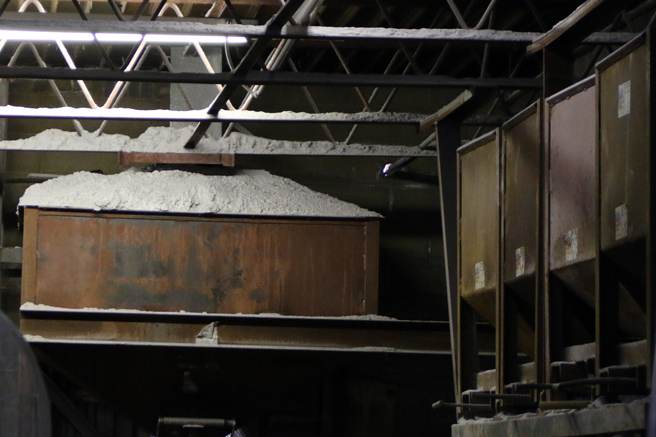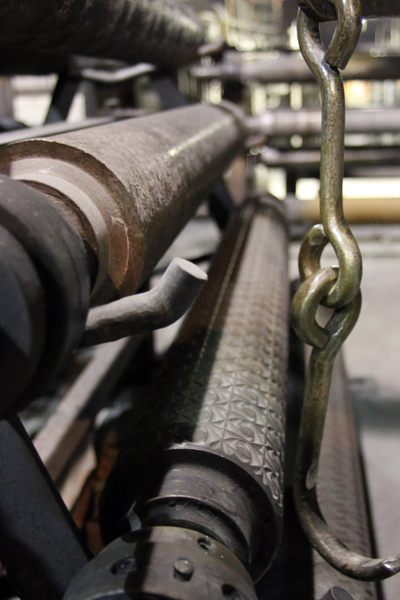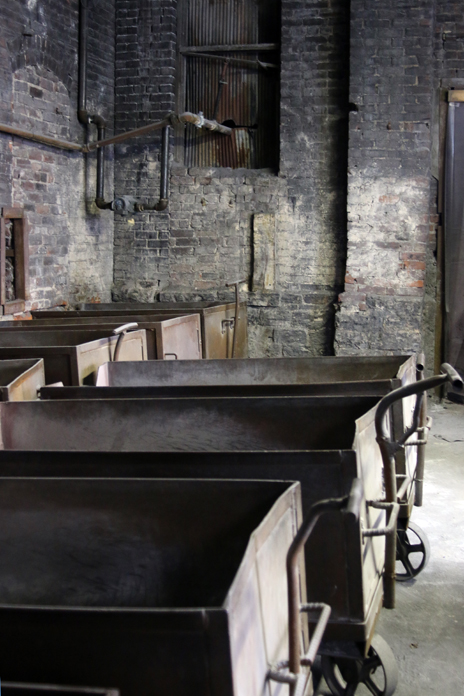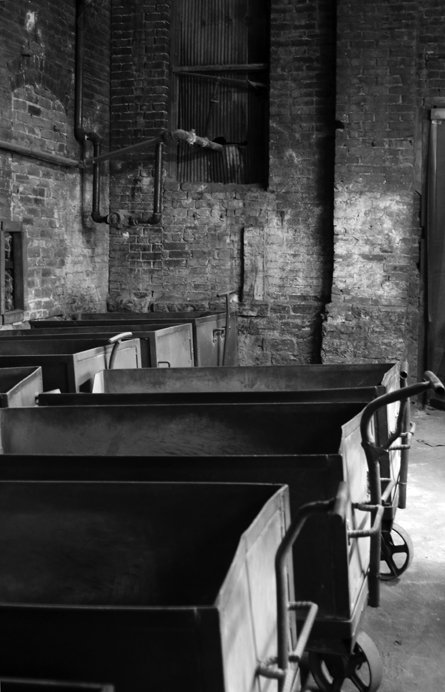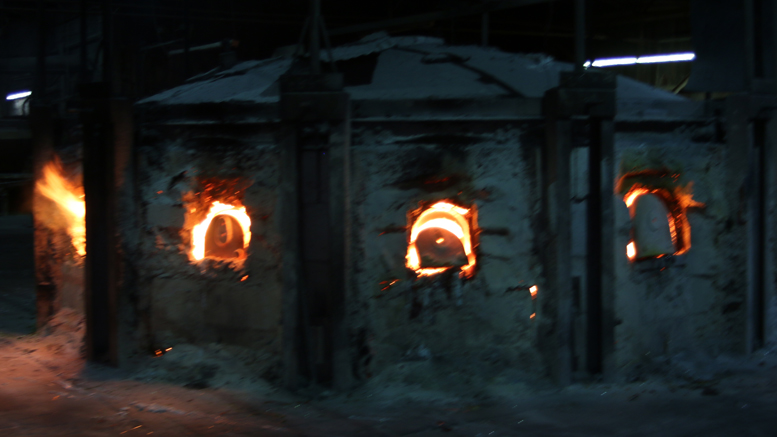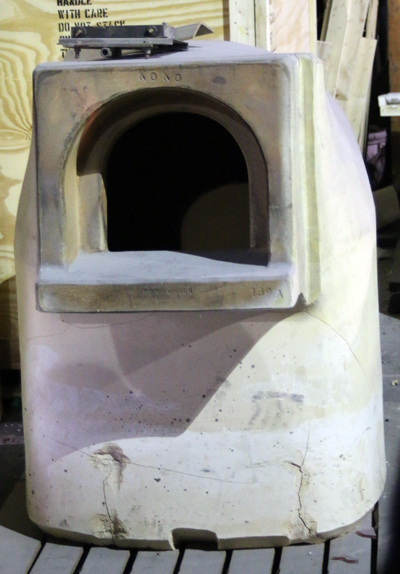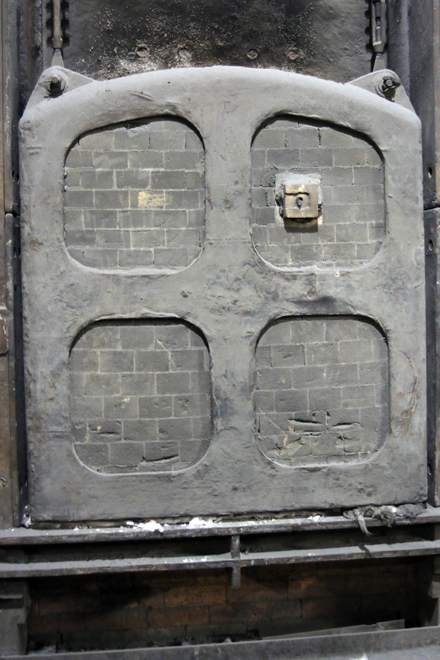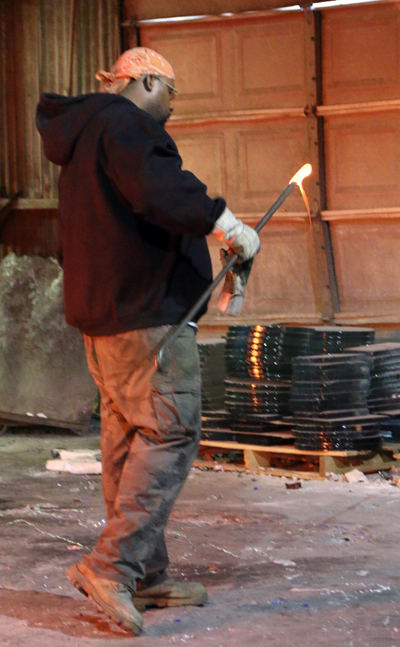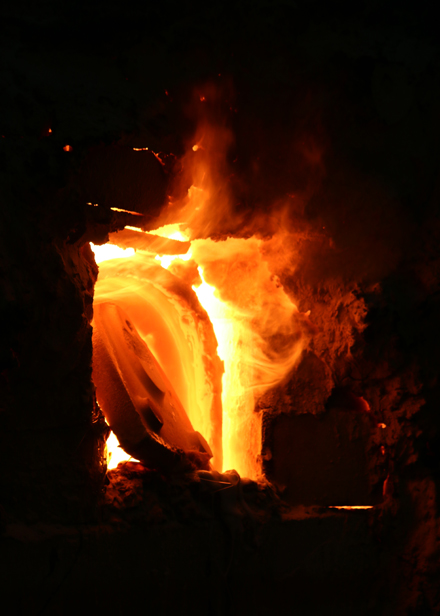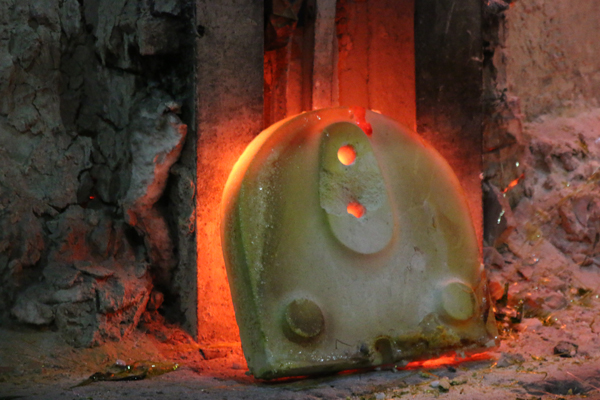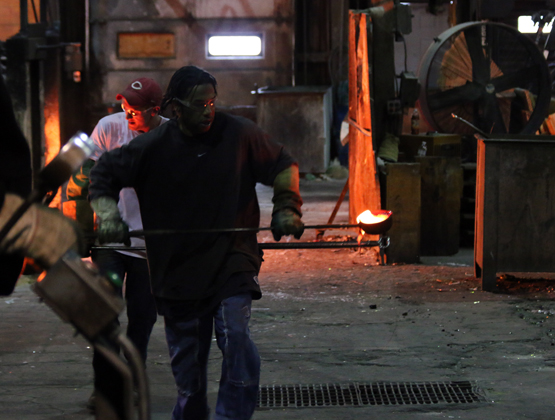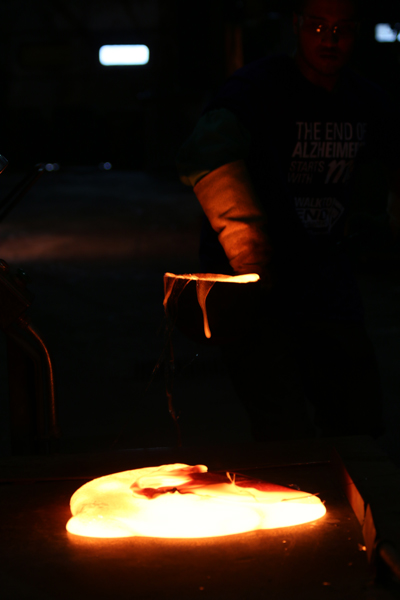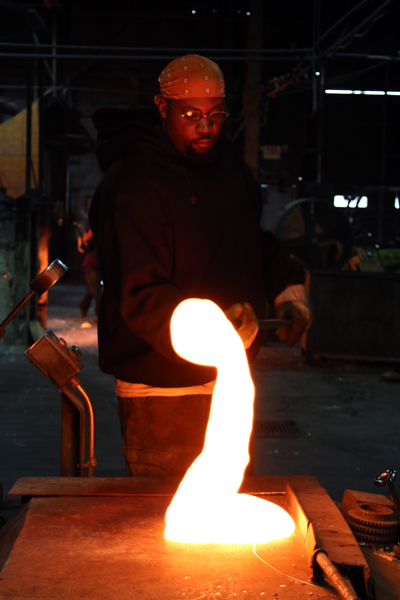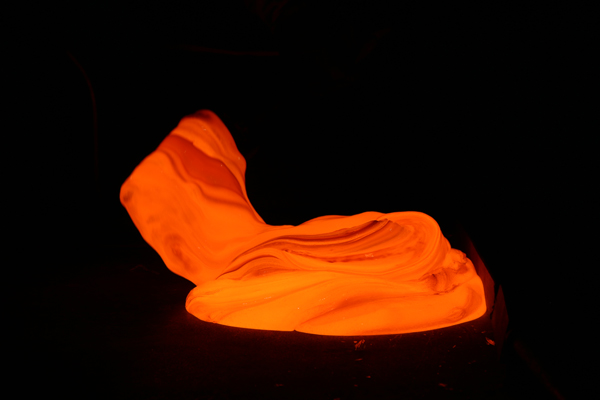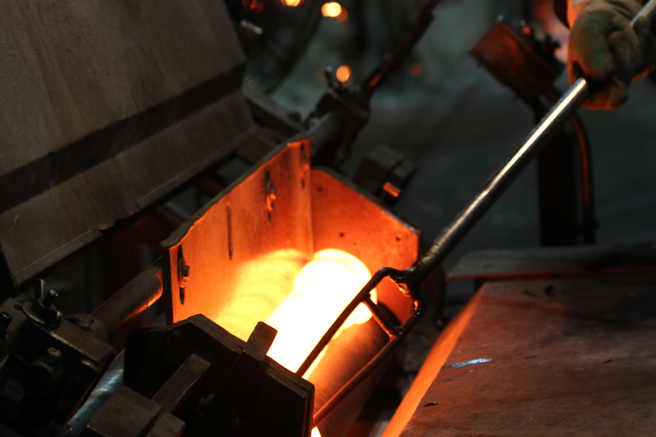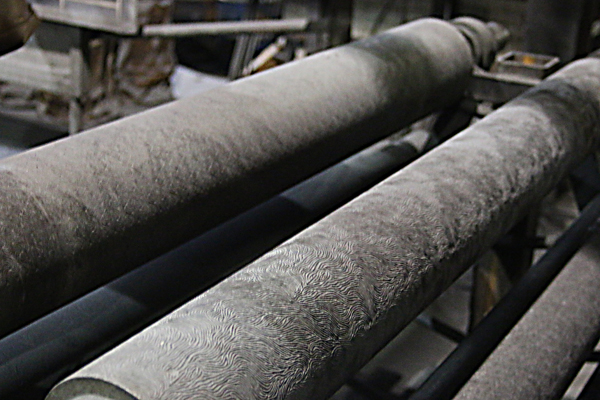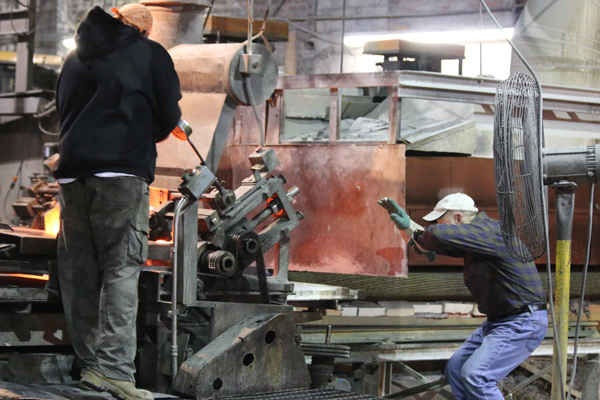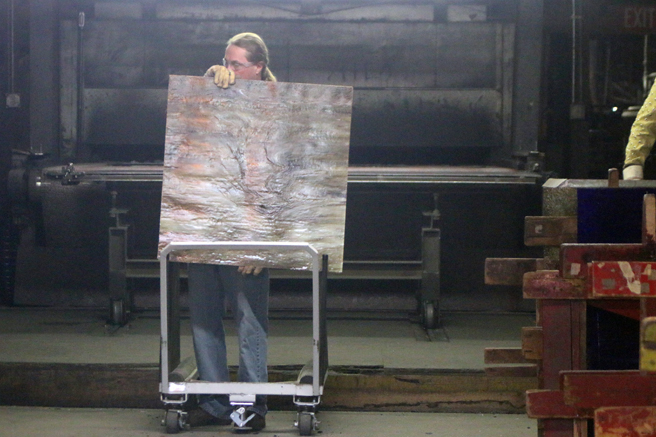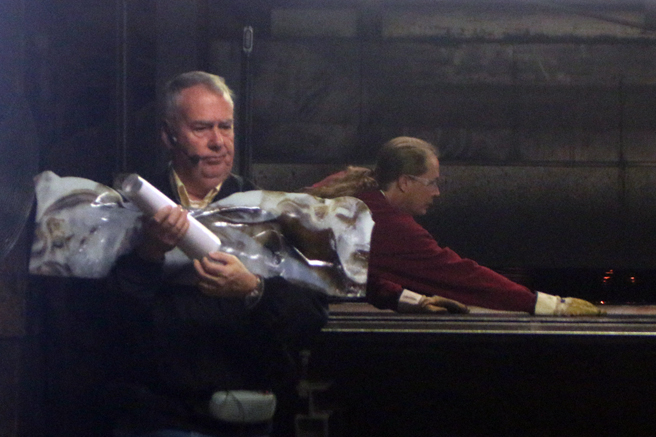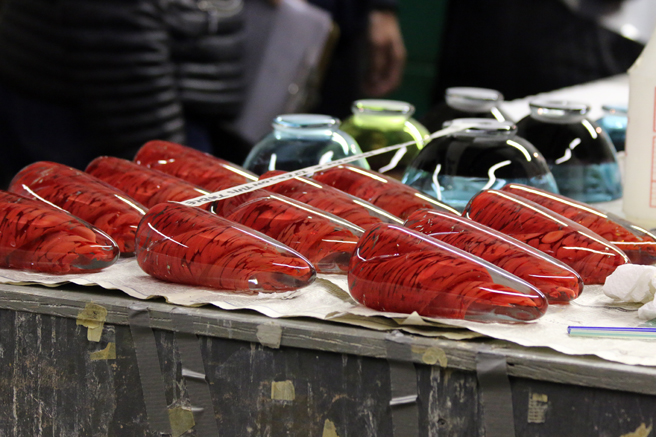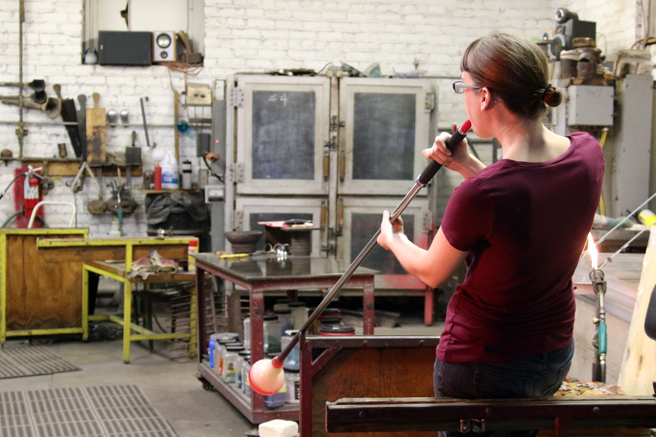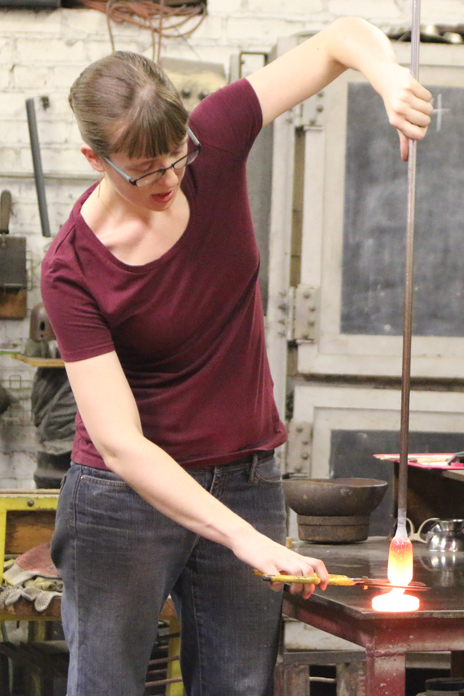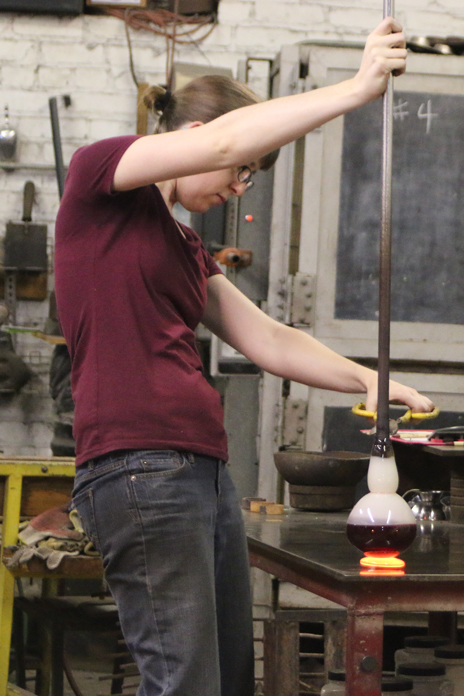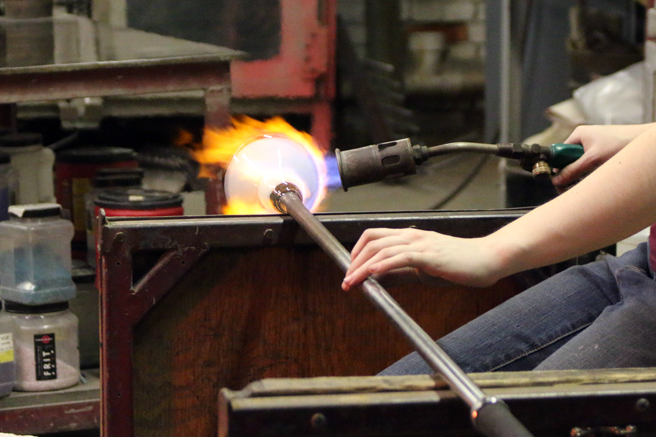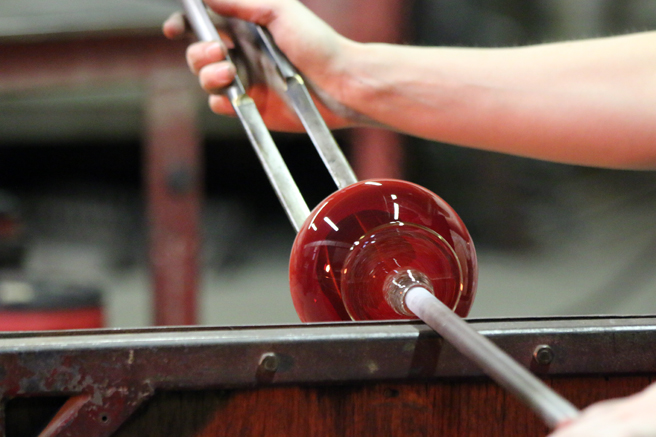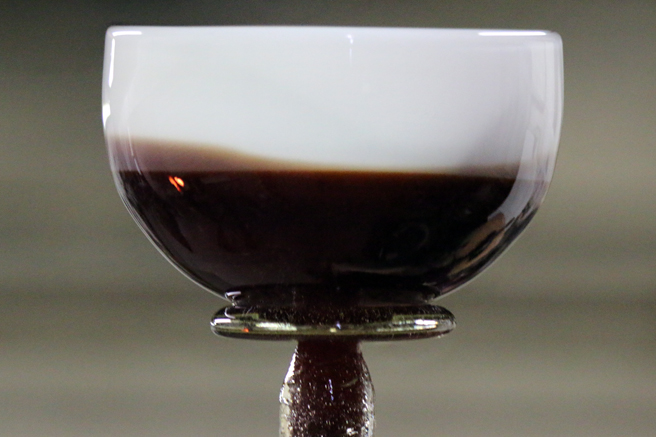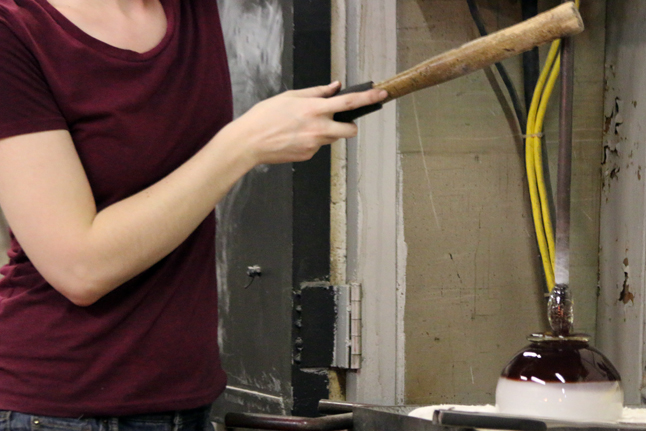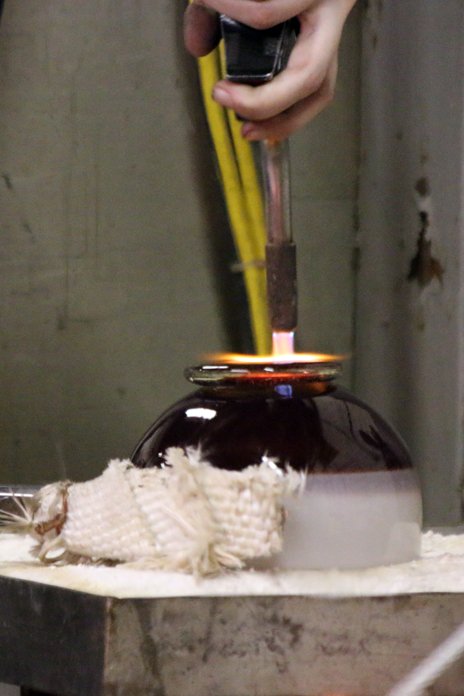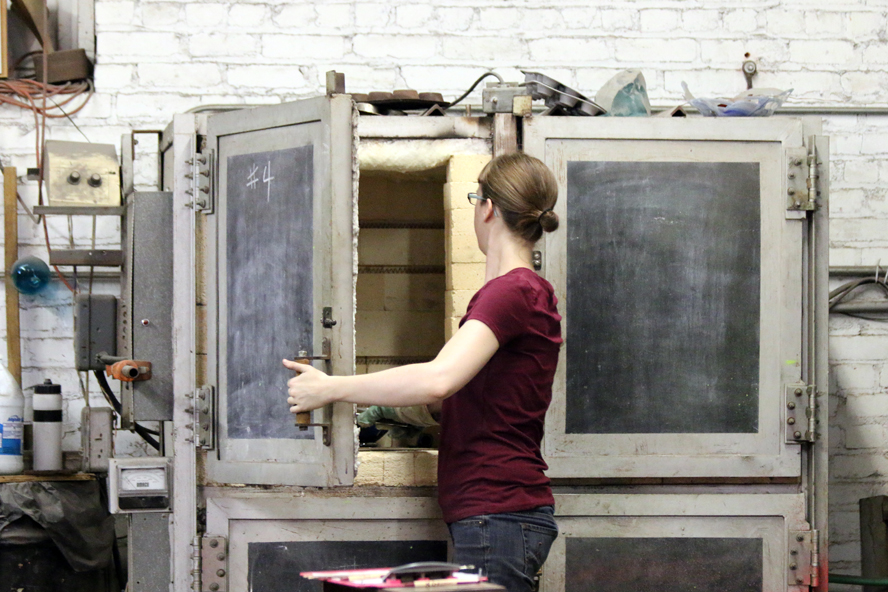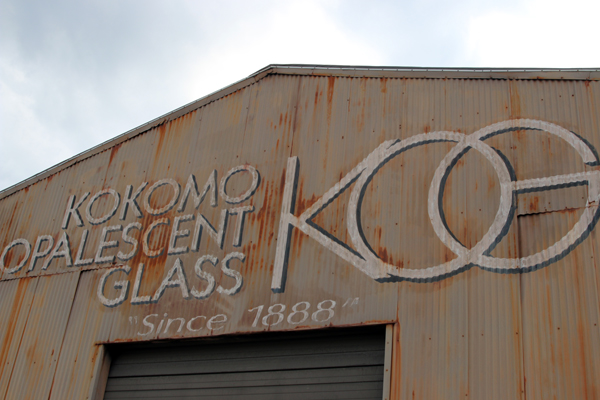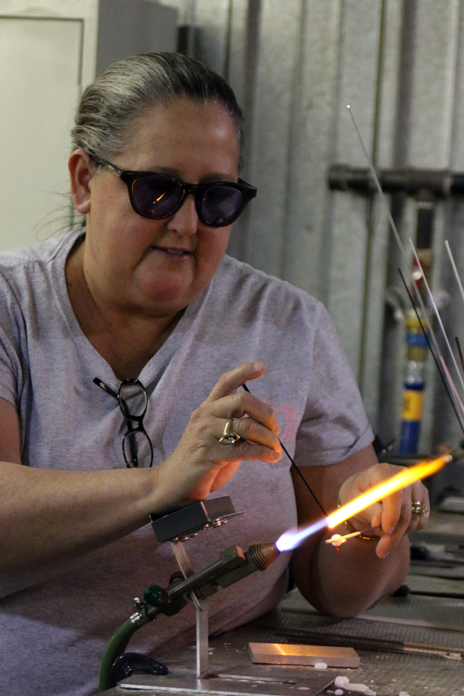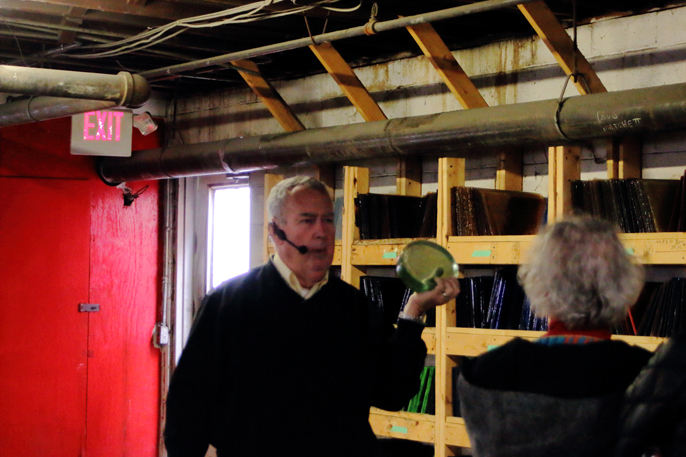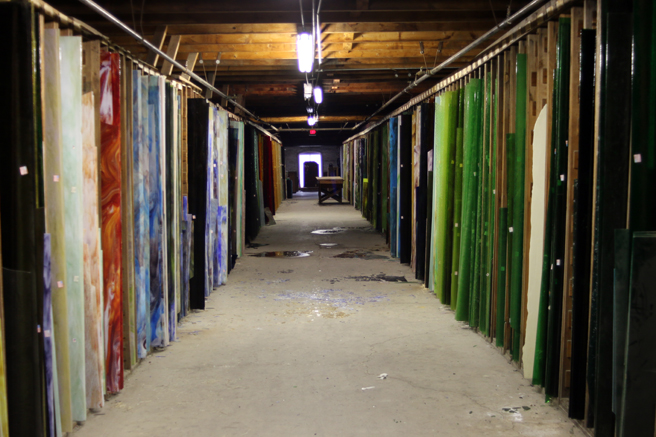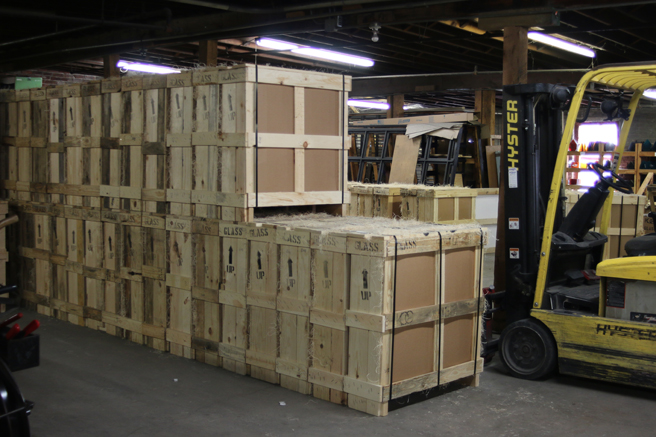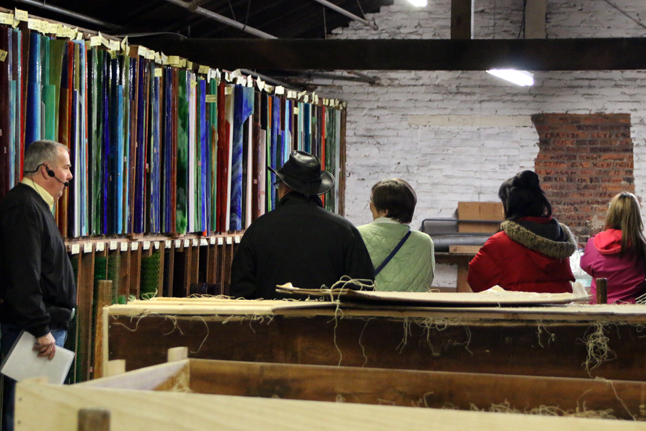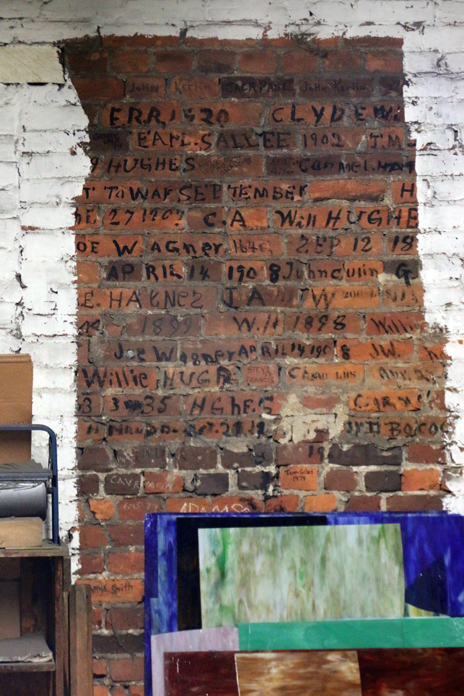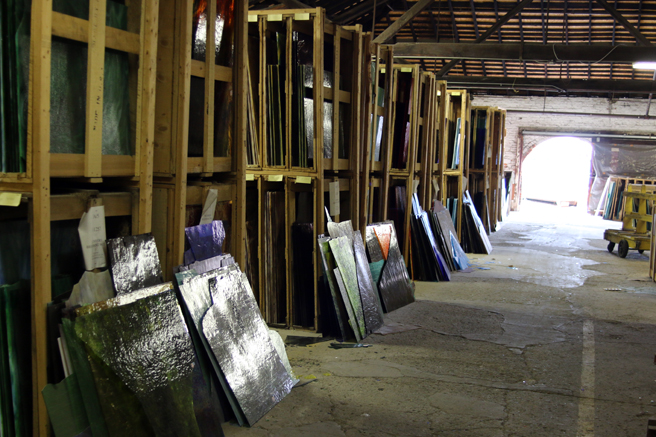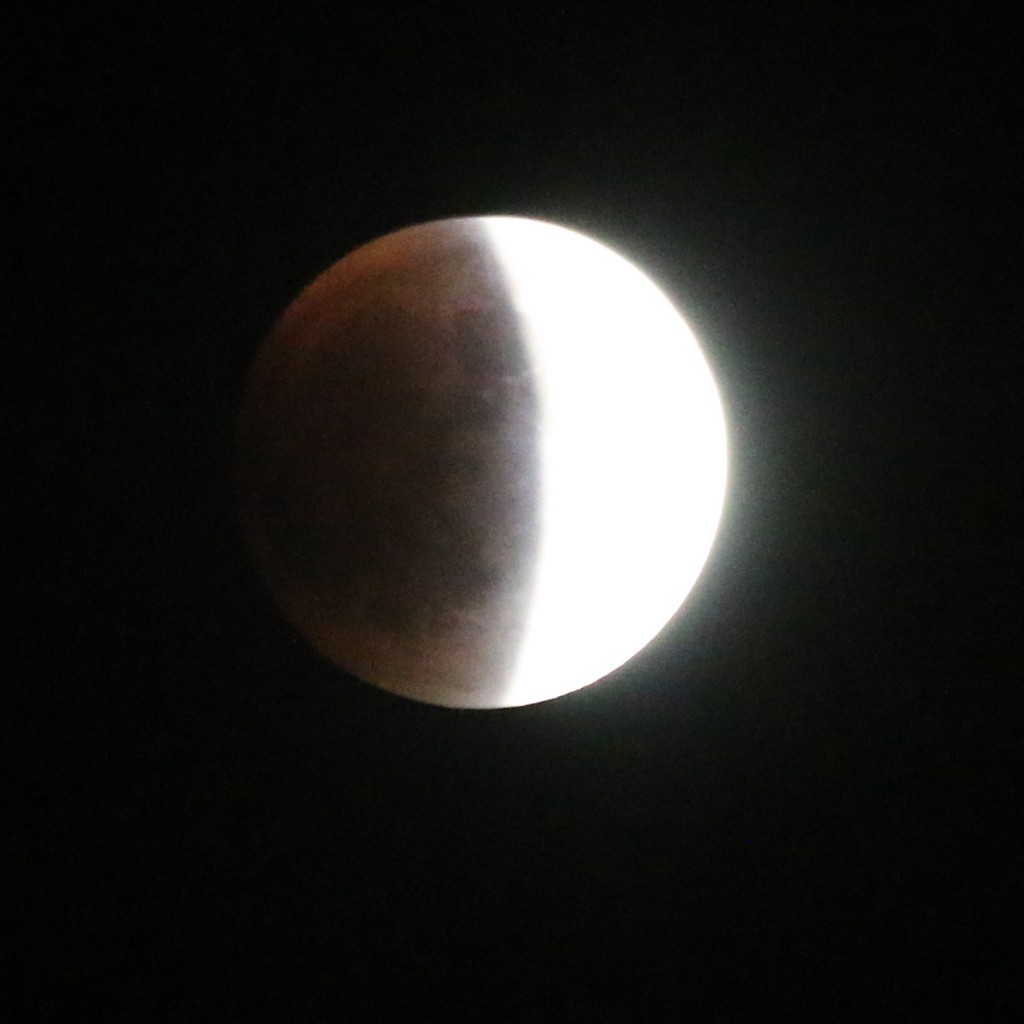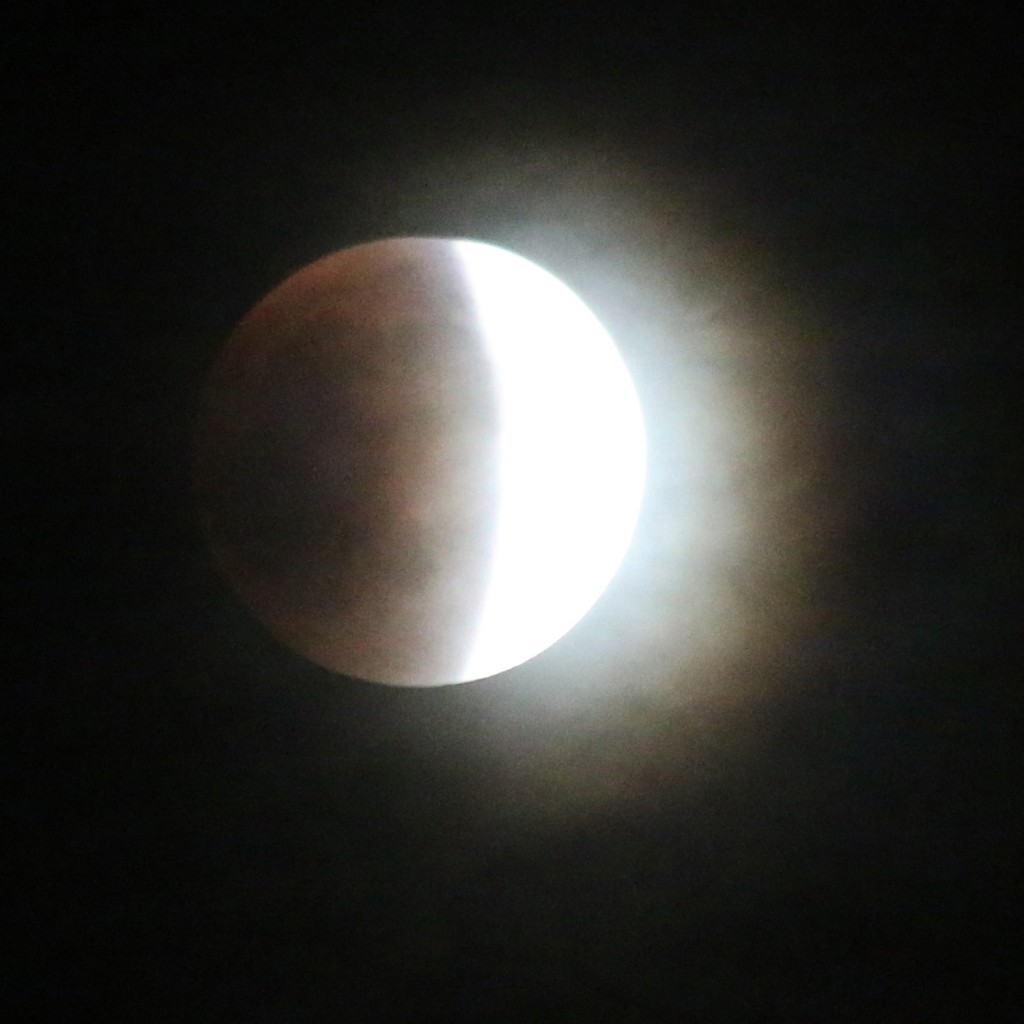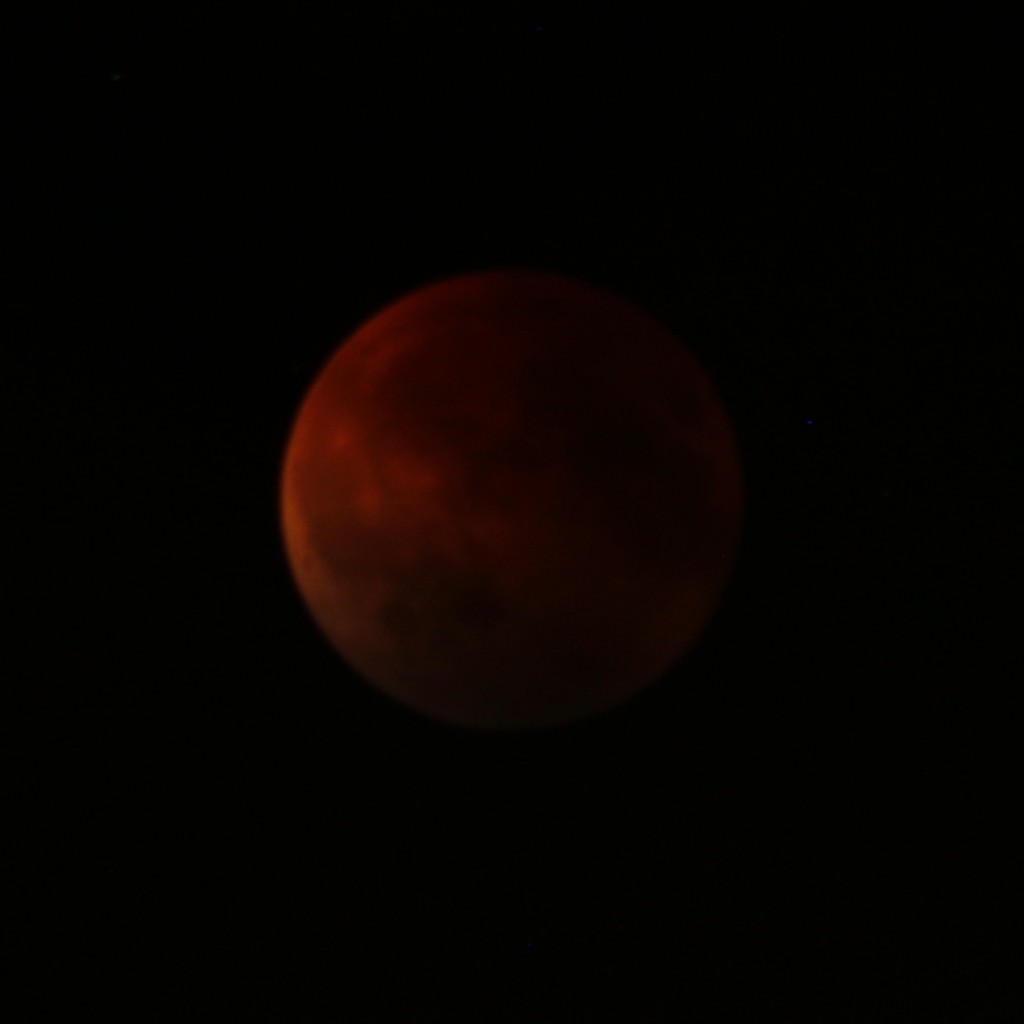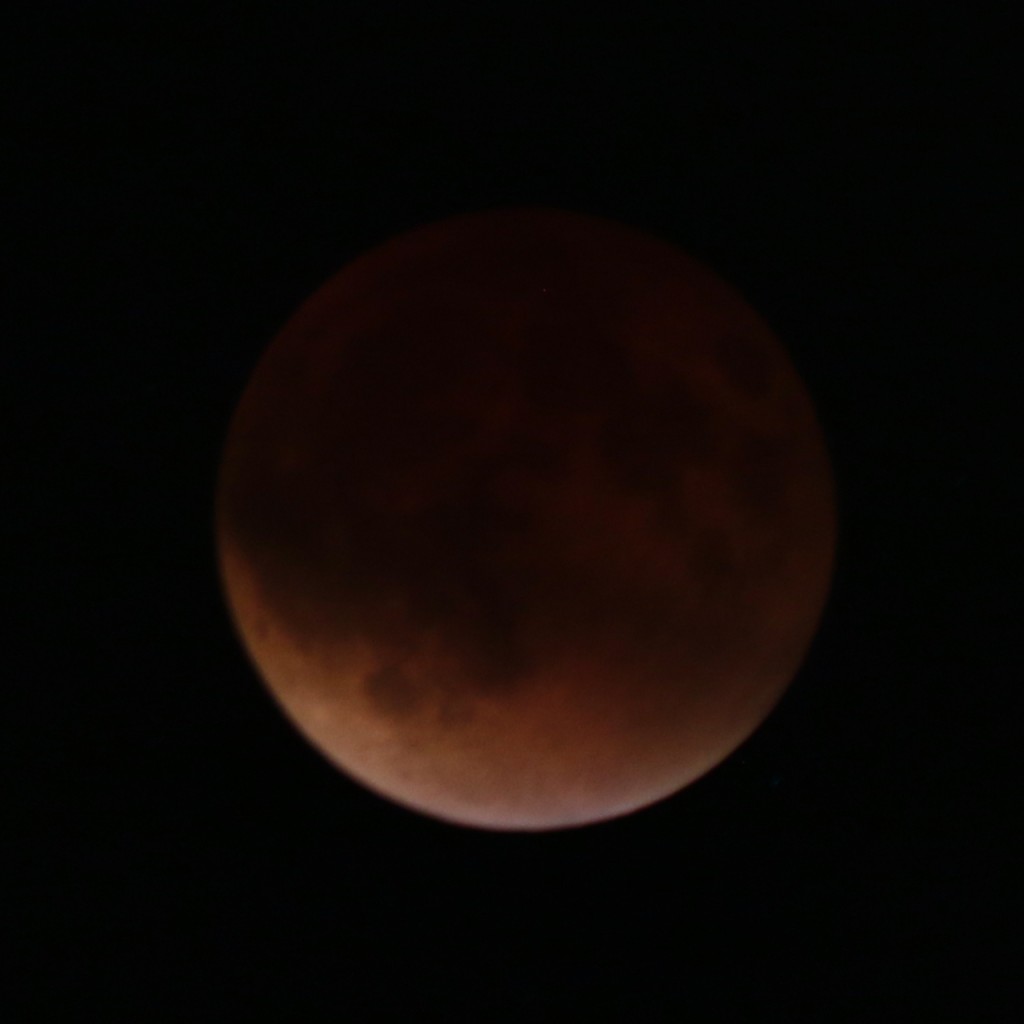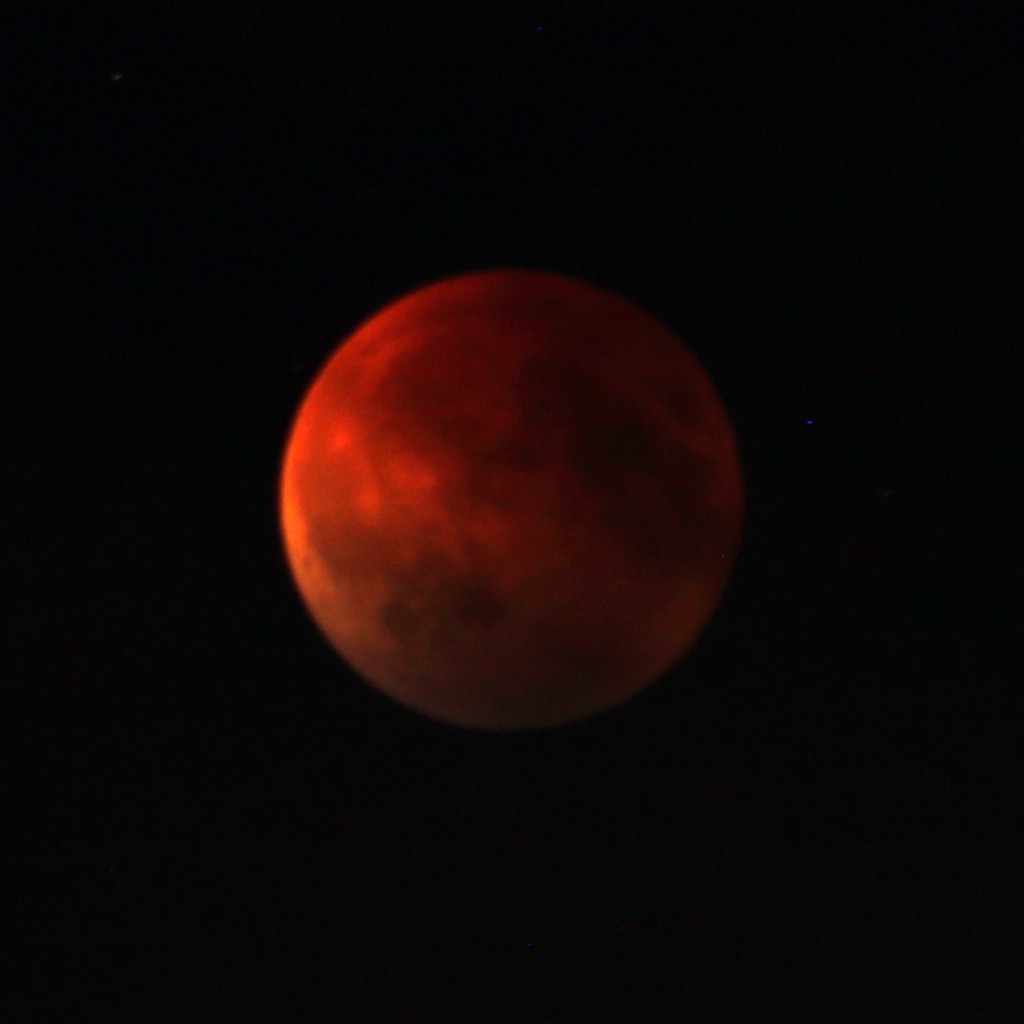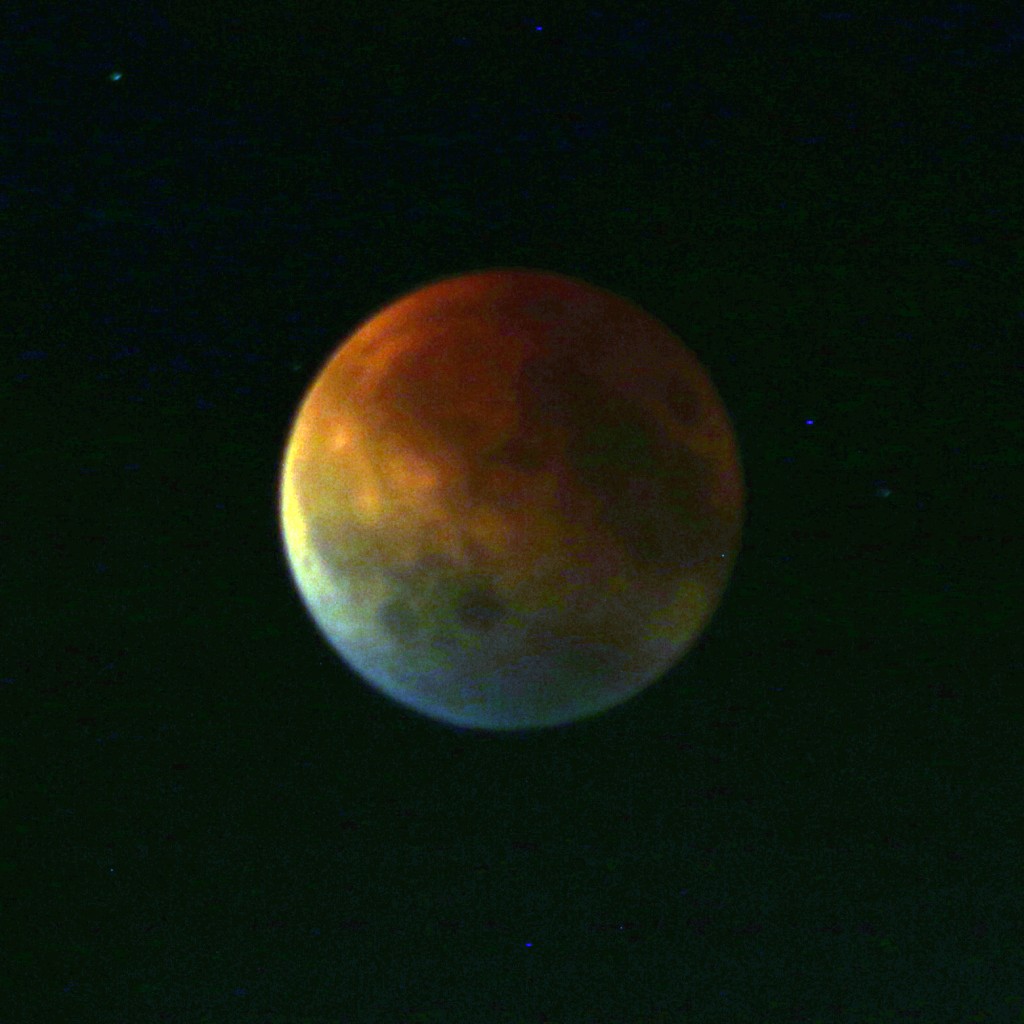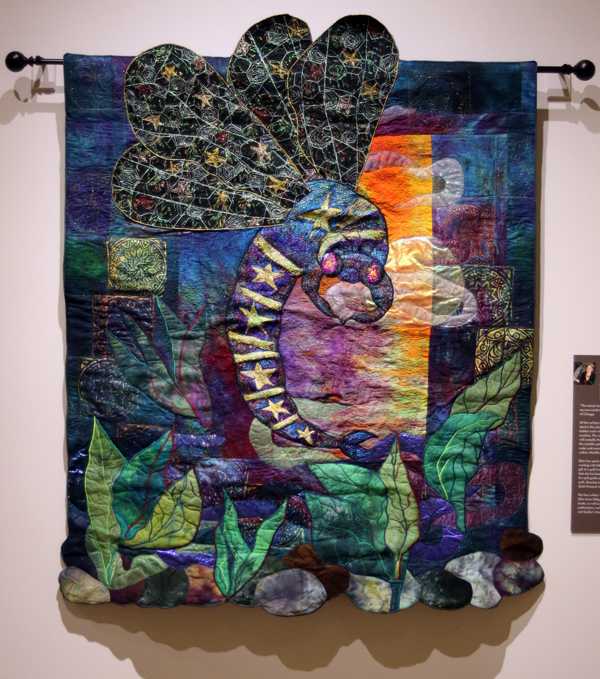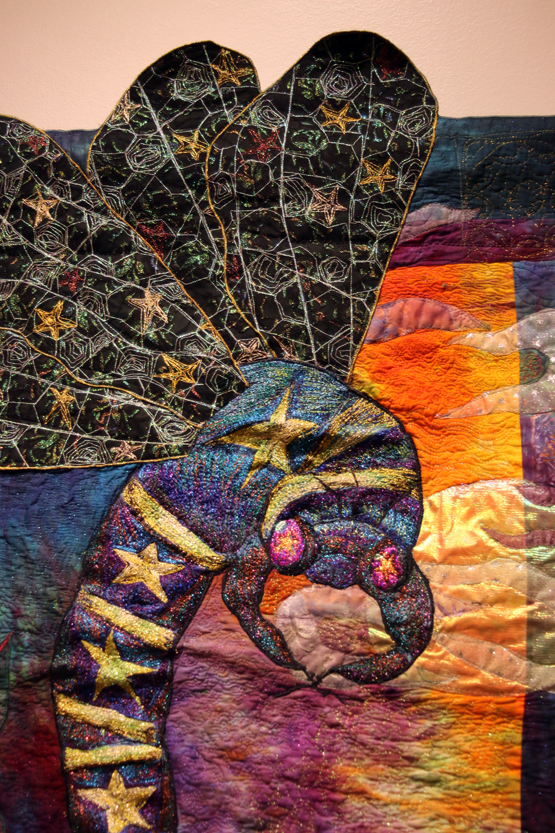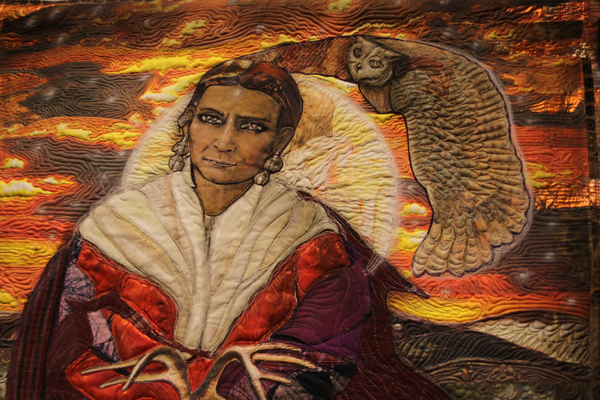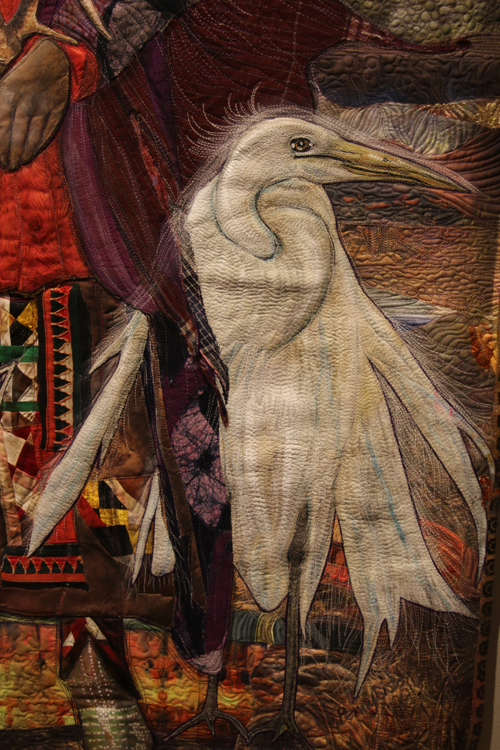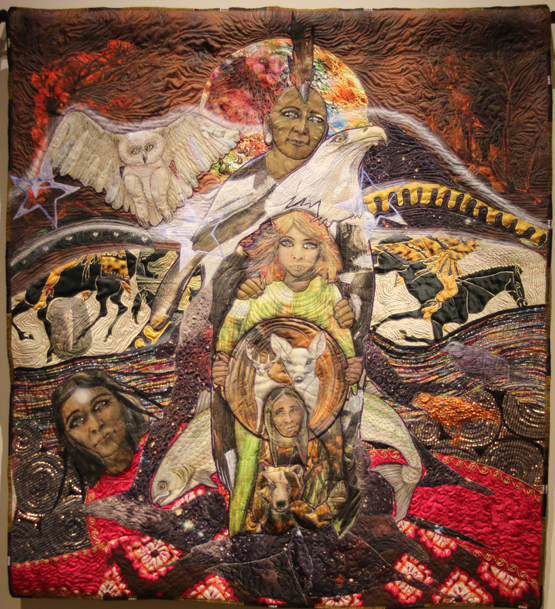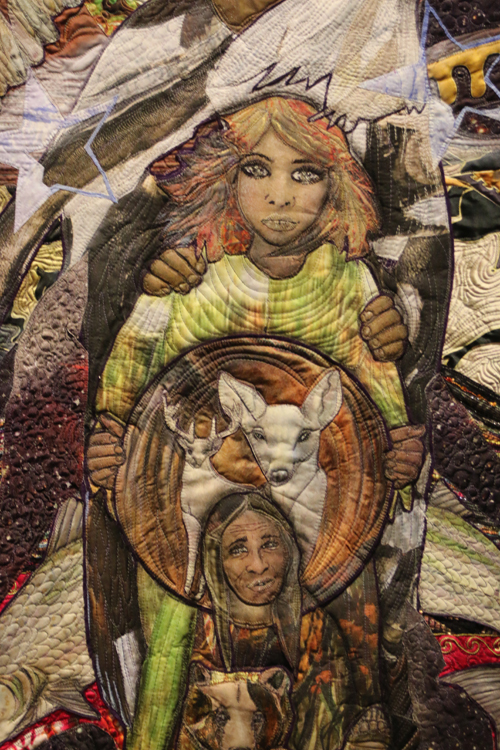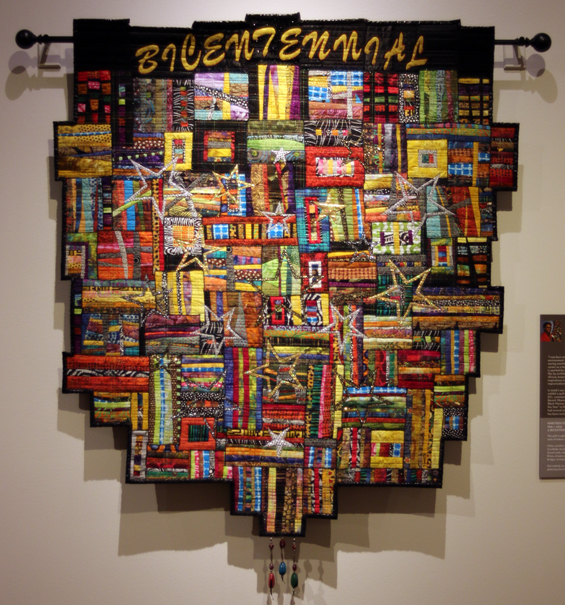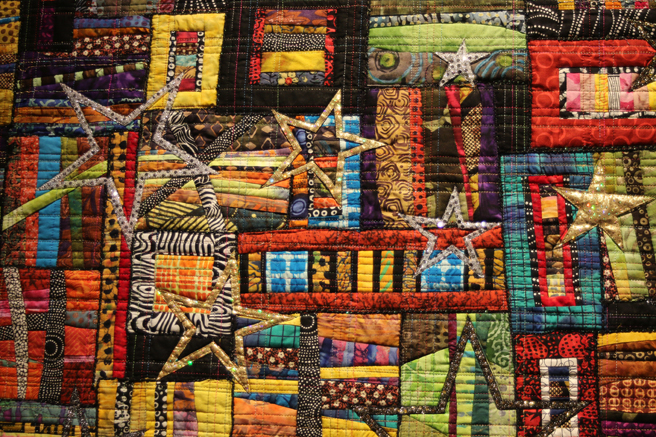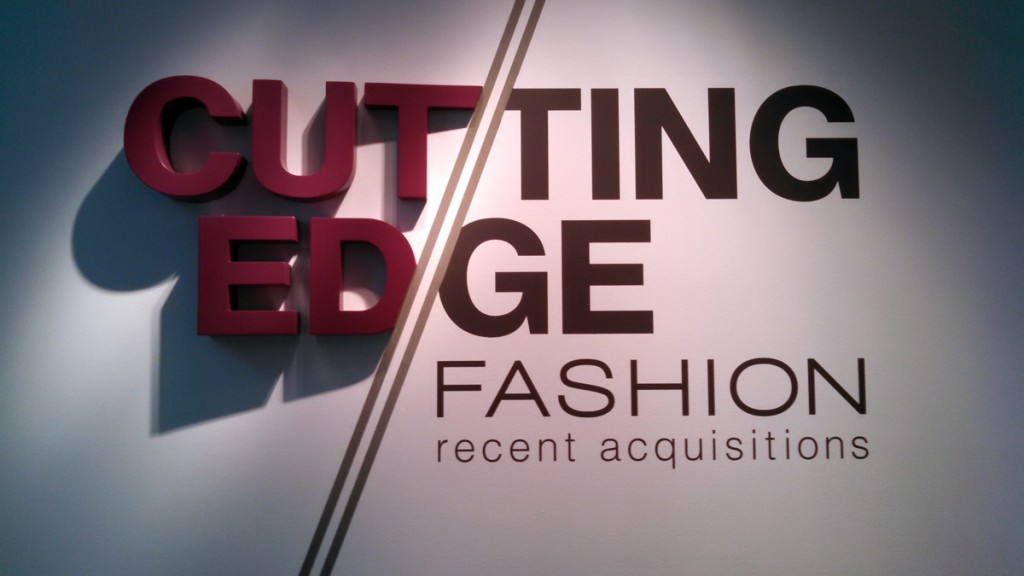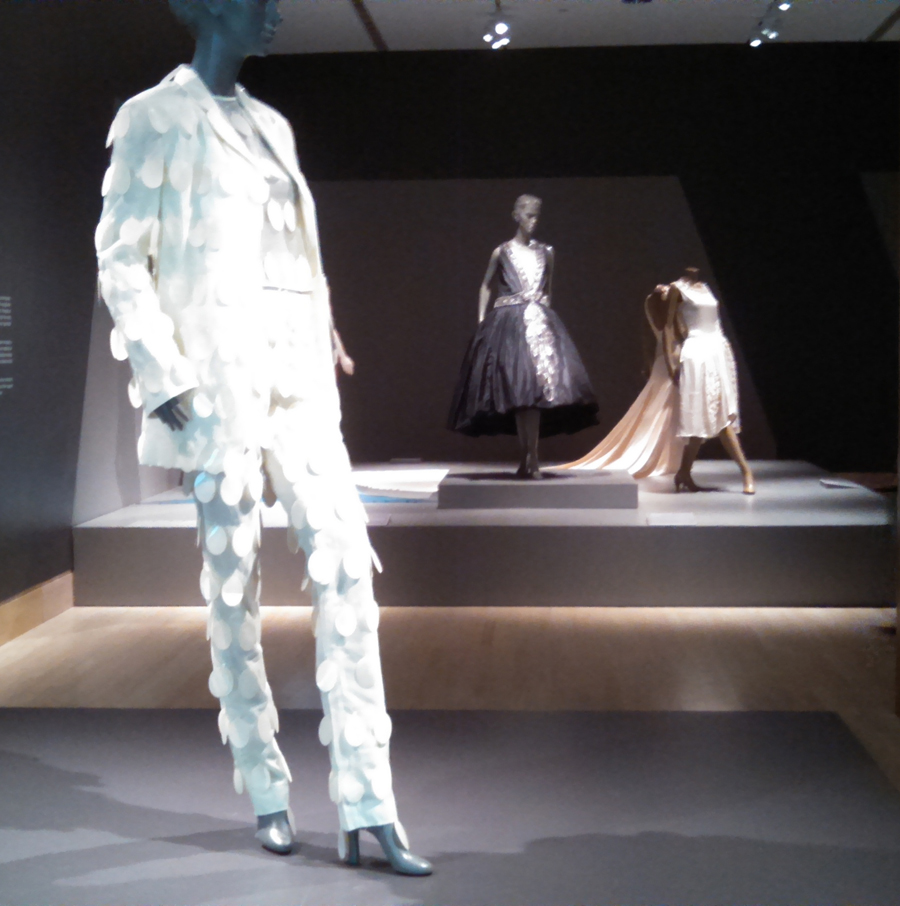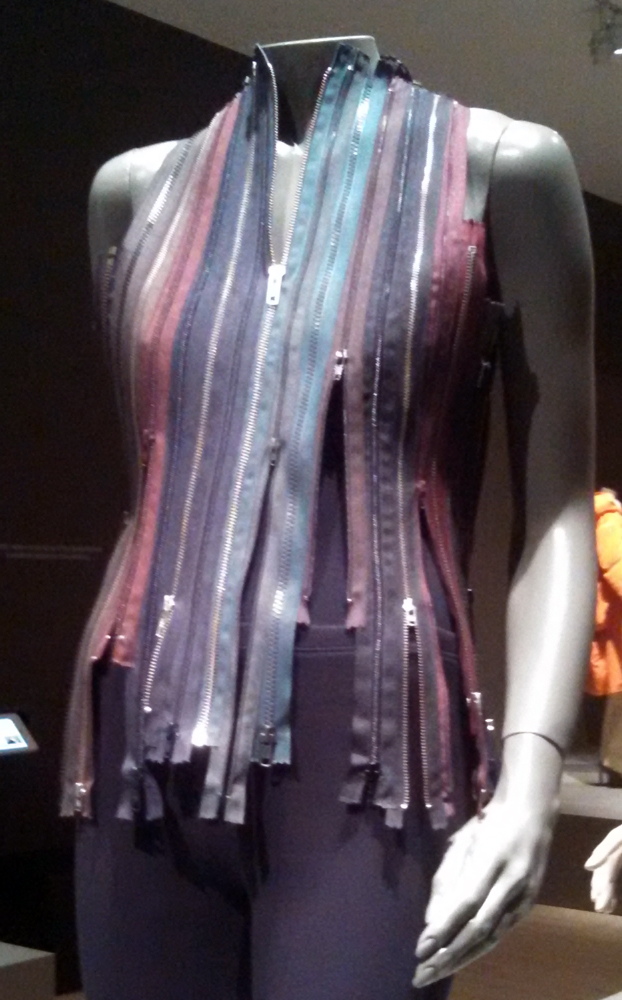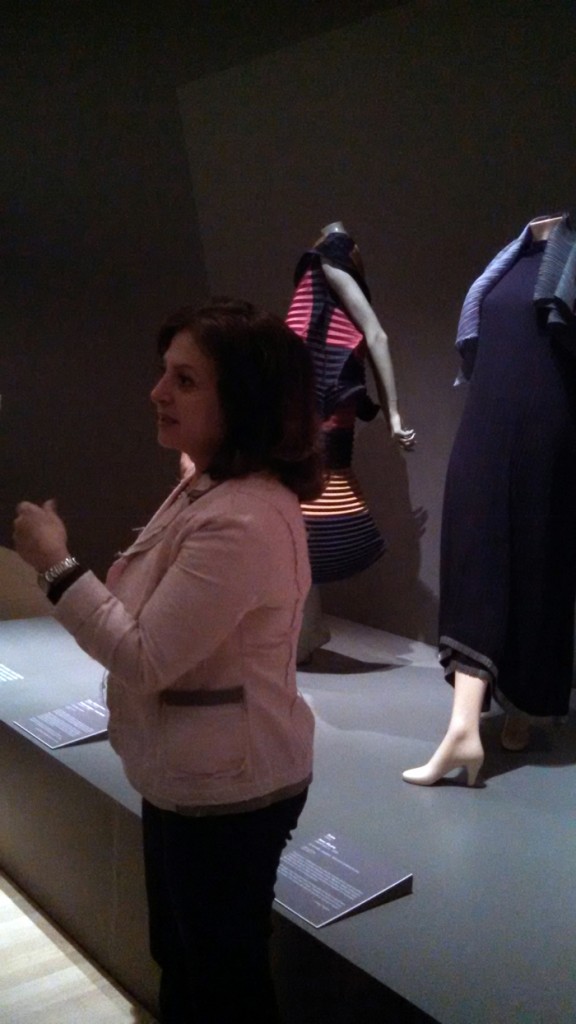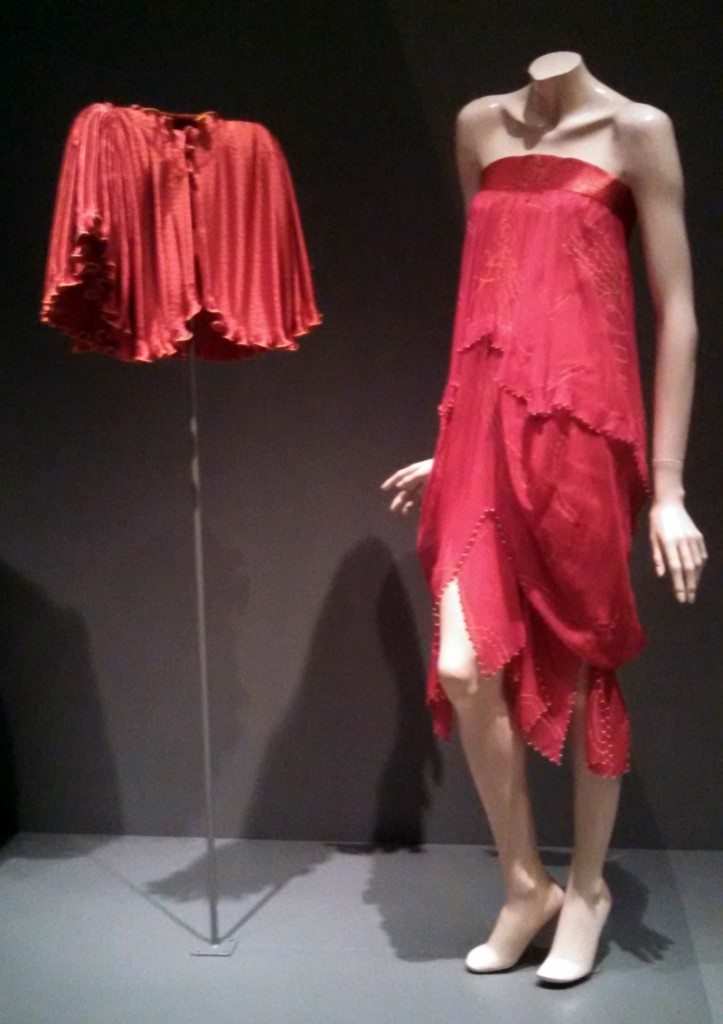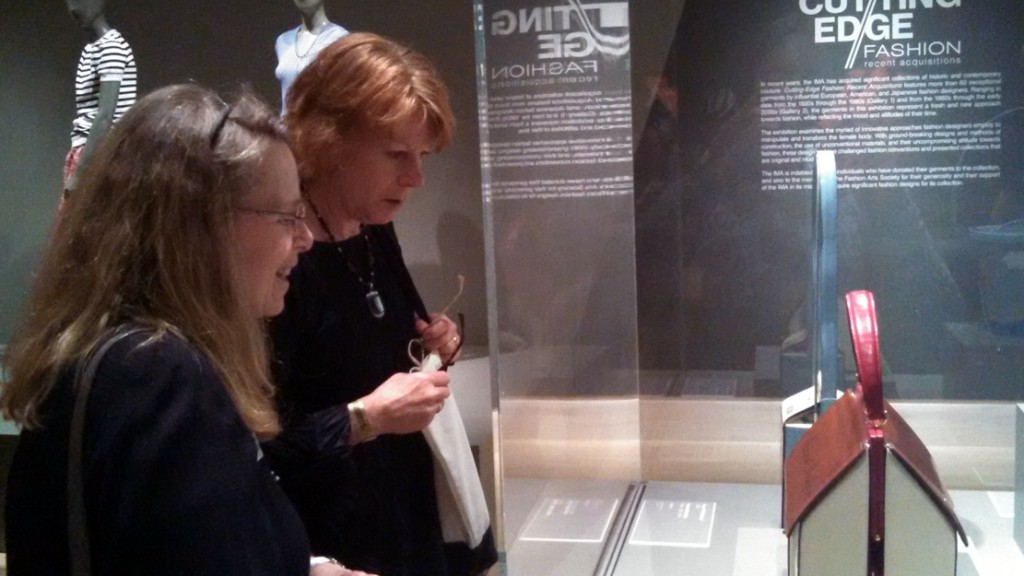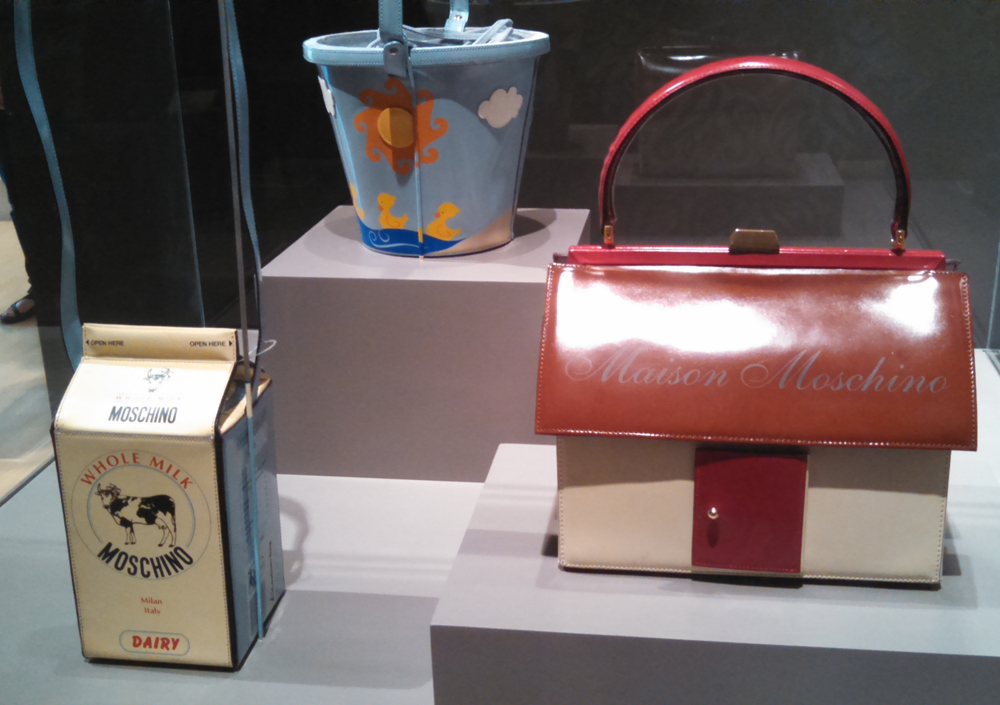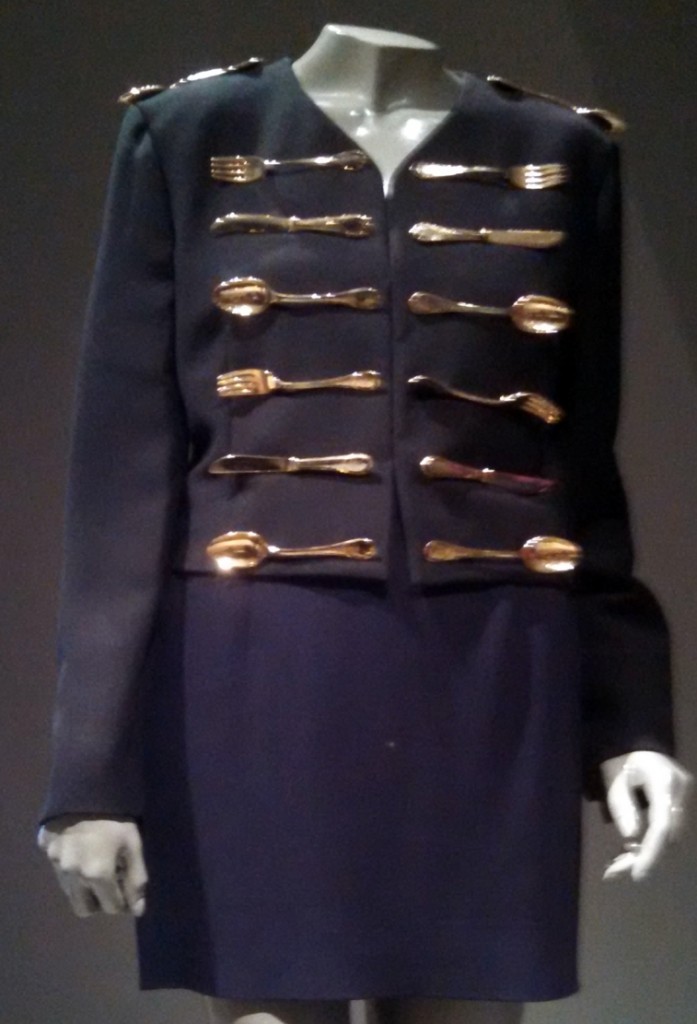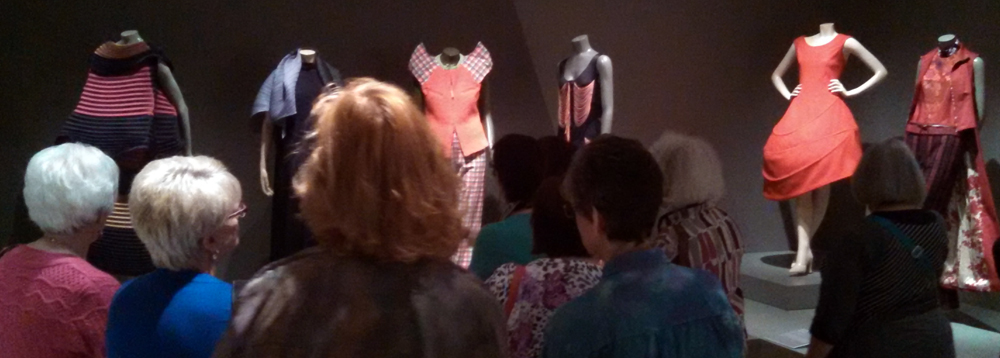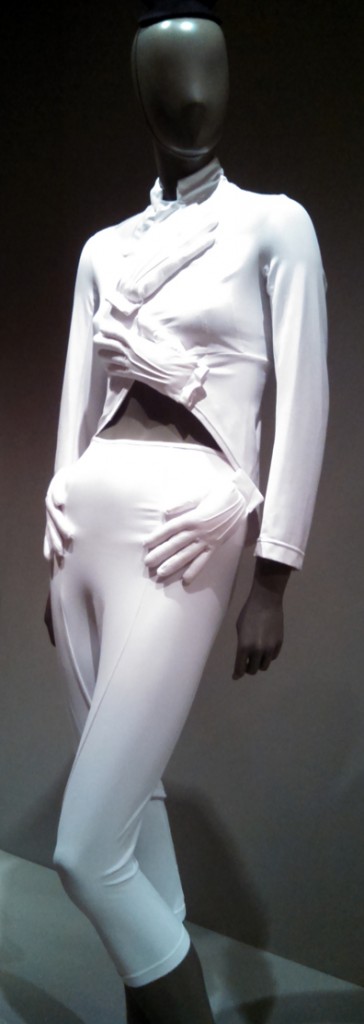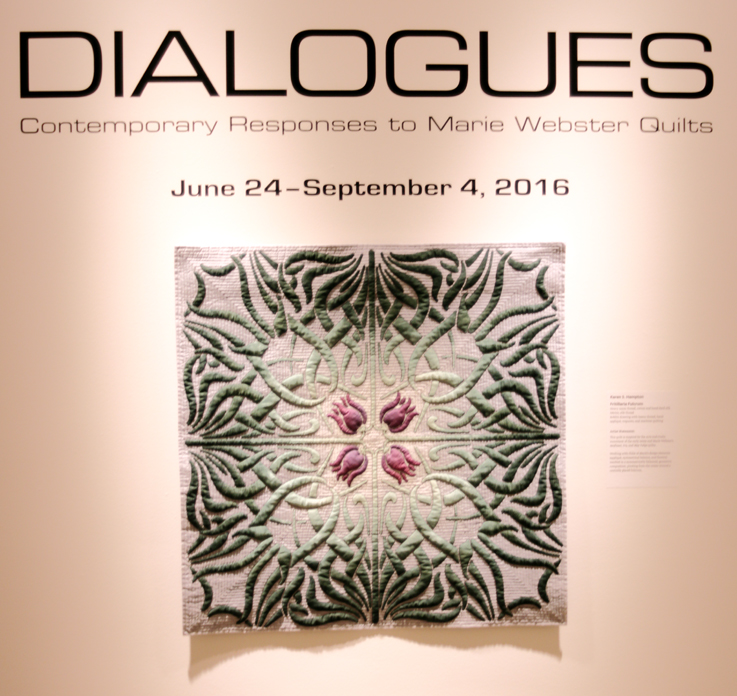 The Indiana chapter of Studio Art Quilt Associates (SAQA) held a call for entry under curator and SAQA IN Representative, Kate Lenkowski. Entrants were from Indiana and a few surrounding states. Niloo Paydar, the Textiles and Fashion Arts Curator at The Indianapolis Museum of Art, juried and advocated for the exhibit at the Indianapolis Museum of Art (IMA). I am very grateful for the efforts of these two women for making this exhibit happen. Kate Lenkowski and Daren Redman had a vision for this exhibit and approached Niloo Paydar and pitched her their vision. Thankfully Niloo embraced the vision and put the proposal forth to the IMA and secured approval.
The Indiana chapter of Studio Art Quilt Associates (SAQA) held a call for entry under curator and SAQA IN Representative, Kate Lenkowski. Entrants were from Indiana and a few surrounding states. Niloo Paydar, the Textiles and Fashion Arts Curator at The Indianapolis Museum of Art, juried and advocated for the exhibit at the Indianapolis Museum of Art (IMA). I am very grateful for the efforts of these two women for making this exhibit happen. Kate Lenkowski and Daren Redman had a vision for this exhibit and approached Niloo Paydar and pitched her their vision. Thankfully Niloo embraced the vision and put the proposal forth to the IMA and secured approval.
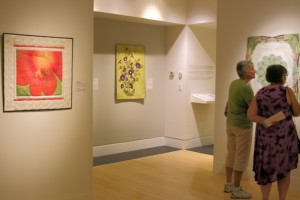
There have been countless debates over the art verses craft of quilts. I definitely come down on the side that art quilts ARE art. They are pieces of art using fiber as the medium. Artists, such as myself, study design and art principles and utilize and analyze them during the making of their art pieces. They are generally not utilitarian crafts, but made and presented as pieces of art. I digress on this topic for a purpose. It can be difficult to get exhibition space due to this issue. Museums and galleries limit the number of art quilt exhibits. I heard back from a gallery space saying that they had already exhibited quilts and felt that two quilt exhibits in two years would be too many. Would they have said that about two watercolor exhibits? Two oil painting exhibits?
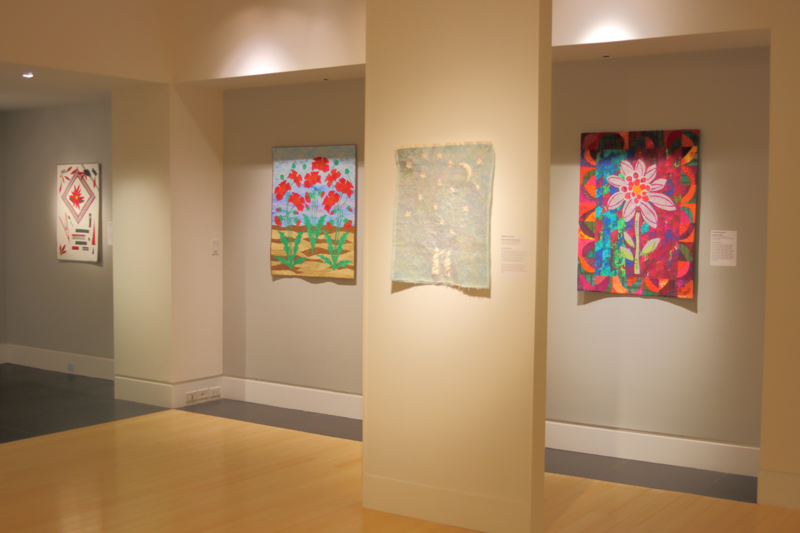
The acceptance of art quilts by museums, galleries, and art academics has been an ongoing struggle since at least the 1970s. I am very grateful to those who have been persistently working toward respect for cloth as a valid art medium. SAQA, and it’s founder, Yvonne Porcella who passed recently, have been integral in this movement toward expanding the value of art quilts in the art world. There are now museums specific to fiber arts and quilts, due in a great part, to the popularity of quilting and the continued efforts to show this art to a broader audience. This exhibit may be ground breaking. I wonder if anyone knows of another art museum that has had two simultaneous quilt exhibits. I thank Niloo Paydar for her efforts to make this exhibit a reality. I hope that we artists did not disappoint her in our resulting pieces for the call and that the IMA gets good feedback on the dual exhibit so that they will expand their exhibiting of art quilts in the future, while modeling the value of quilt art for other museums and galleries.
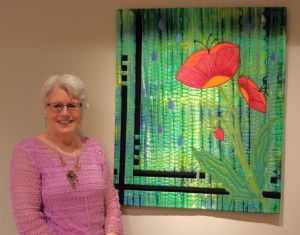
Susie Goodwin with one of her pieces during the opening
I attended the opening evening’s artist panel where the topic: When Artists Step Out of Their Comfort Zone was very interesting given that our pieces were to be artist responses to the quilts and body of work of Marie Webster. Drawing inspiration to make an art quilt based on something so removed from contemporary art quilts was a challenge for many of us and it was interesting to hear how four of the exhibiting artists dealt with this disparity. An album of some quilts from the Marie Webster exhibit are at the bottom of the page. The panel was comprised of two Indiana artists, Pamela Burns and Terry Pate, and two regional artists, Barbara Schneider and Kathleen Loomis.
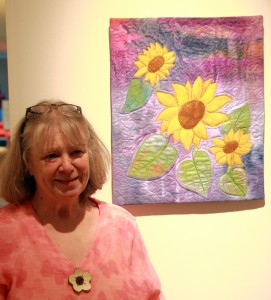
Joan Webb at opening night with her quilt
Marie was a Hoosier quilter in the early 1900s. While today her quilts seem very traditional, back in her time they were cutting edge. Her quilts and their patterns were published and sought after. She became an entrepreneur in a time when it was unusual for married women to work, let alone be an entrepreneur. She published the first book on quilting. I did not know much of anything about Marie Webster before I began and did research into her and her work because the pieces were to be “dialogues” with Marie. I will expand on my journey for this exhibit in a future blog. For brevity on this post, suffice it to say, I did enjoy my “dialogue” with Marie and am grateful for this exhibit for all I learned about Marie Webster, her work, and her process.
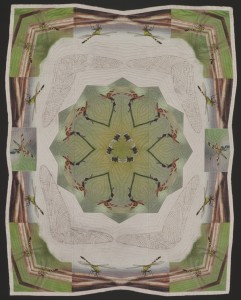
My quilt Dragonflies (submission photo). The dragonfly wings in the white border are quilted in metallic threads that is also surrounding each dragonfly.
There were so many beautiful quilts in the exhibit, I decided to give myself some guidelines in selecting which pieces to post here. Just like any jurying process, that does not mean there were not many other equally beautiful pieces I could have chosen. I decided to choose some overall photos of the gallery and quilts from Hoosier quilters whom I know. I will say, that due to the fact that most of Marie Webster’s quilts are floral, so are the responses. There are only two quilts that do not have flowers: mine and Kathleen Loomis’ (seen above on the pilar in the second gallery photo). Mine is below, but I chose to use my submission image since it is a better photograph than I was able to take in the gallery. I also include the submission photo of Sonia Martin’s piece since I took that for her and the natural lighting is better for photography.
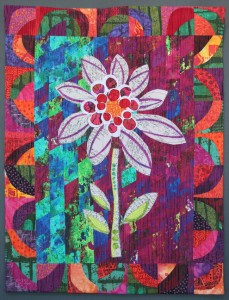
Sonia Martin Brown’s submission photo
At the bottom of the page is a slideshow of some of the quilts in the Marie Webster exhibit at the Indianapolis Museum of Art. The lighting is low to protect the quilts as much as possible during the exhibit. They are also on angle for less stress on the fibers. So, it does not provide the best possible scenario for photographing the quilts. The quilts are pastels in general and I adjusted the photographs. During adjustments, they either turn out too bright or still too dim. I over adjusted some and under adjusted others to give you more of an idea range of color. The truth lies in between.
Since I brought up lighting issues with quilts, I also ran into lighting issues with the SAQA exhibit. You don’t want bright continuous light on a quilt because light fades fabric. The quilts were tricky to photograph and adjust as well. You don’t want to use flashes with quilts on exhibit which would have helped even out the lighting on the quilts, but adds to the light exposure to the fabrics. I almost always have my cameras set to no flash since I am often photographing where there is no flash or flash is distracting to others. I wanted to show the difference in the pictures with straight from the camera and adjusted in software.
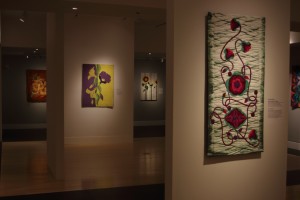
This doesn’t truly represent the light level in the room (it isn’t dark in the room), but does show that it is difficult for a camera to photograph without flash in a low light indoor situation intended to lessen the light exposure to textiles in an exhibit.
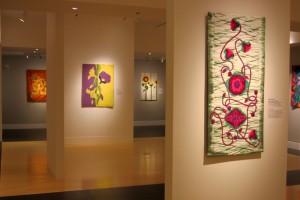
This is an adjusted version of the same photo. If you go much lighter, the colors in the quilts look faded. Again, this still does not represent the actual look and feel of the room. It is much brighter than it appears in the photo
The Marie Webster exhibit has a very serene feel with the big pastel antique quilts. It was curated and presented beautifully by Niloo Paydar. I felt joy in their beauty and calm in their presentation. I hope you have a chance to visit both exhibits. The SAQA Dialogues exhibit closes Sept 4th 2016 and the Marie Webster exhibit closes January 7 2017. More information can be found at the IMAs website.
